http://www.wikipaintings.org/en/henri-matisse
Henri-Émile-Benoît Matisse (French pronunciation: [ɑ̃ʁi matis]; 31 December 1869 – 3 November 1954) was a French artist, known for his use of colour and his fluid and original draughtsmanship. He was a draughtsman, printmaker, and sculptor, but is known primarily as a painter. Matisse is commonly regarded, along with Picasso and Marcel Duchamp, as one of the three artists who helped to define the revolutionary developments in the plastic arts in the opening decades of the 20th century, responsible for significant developments in painting and sculpture. Although he was initially labelled a Fauve (wild beast), by the 1920s he was increasingly hailed as an upholder of the classical tradition in French painting. His mastery of the expressive language of colour and drawing, displayed in a body of work spanning over a half-century, won him recognition as a leading figure in modern art.
Early life and education
Matisse was born in Le Cateau-Cambrésis, Nord, France, the oldest son of a prosperous grain merchant. He grew up in Bohain-en-Vermandois, Picardie, France. In 1887 he went to Paris to study law, working as a court administrator in Le Cateau-Cambrésis after gaining his qualification. He first started to paint in 1889, after his mother brought him art supplies during a period of convalescence following an attack of appendicitis. He discovered "a kind of paradise" as he later described it, and decided to become an artist, deeply disappointing his father. In 1891, he returned to Paris to study art at the Académie Julian and became a student of William-Adolphe Bouguereau and Gustave Moreau. Initially he painted still-lifes and landscapes in a traditional style, at which he achieved reasonable proficiency. Matisse was influenced by the works of earlier masters such as Jean-Baptiste-Siméon Chardin, Nicolas Poussin, and Antoine Watteau, as well as by modern artists such as Édouard Manet, and by Japanese art. Chardin was one of Matisse&s most admired painters; as an art student he made copies of four Chardin paintings in the Louvre.
In 1896 and 1897, Matisse visited the Australian painter John Peter Russell on the island Belle Île off the coast of Brittany. Russell introduced him to Impressionism and to the work of van Gogh, who had been a friend of Russell but was completely unknown at the time. Matisse&s style changed completely, and he would later say "Russell was my teacher, and Russell explained colour theory to me." In 1896 Matisse exhibited five paintings in the salon of the Société Nationale des Beaux-Arts, two of which were purchased by the state.
With the model Caroline Joblau, he had a daughter, Marguerite, born in 1894. In 1898 he married Amélie Noellie Parayre; the two raised Marguerite together and had two sons, Jean (born 1899) and Pierre (born 1900). Marguerite and Amélie often served as models for Matisse.
In 1898, on the advice of Camille Pissarro, he went to London to study the paintings of J. M. W. Turner and then went on a trip to Corsica. Upon his return to Paris in February 1899, he worked beside Albert Marquet and met André Derain, Jean Puy, and Jules Flandrin. Matisse immersed himself in the work of others and went into debt from buying work from painters he admired. The work he hung and displayed in his home included a plaster bust by Rodin, a painting by Gauguin, a drawing by van Gogh, and Cézanne&s Three Bathers. In Cézanne&s sense of pictorial structure and colour, Matisse found his main inspiration.
Many of Matisse&s paintings from 1898 to 1901 make use of a Divisionist technique he adopted after reading Paul Signac&s essay, "D&Eugène Delacroix au Néo-impressionisme". His paintings of 1902–03, a period of material hardship for the artist, are comparatively somber and reveal a preoccupation with form. Having made his first attempt at sculpture, a copy after Antoine-Louis Barye, in 1899, he devoted much of his energy to working in clay, completing The Slave in 1903.
Fauvism
Fauvism as a style began around 1900 and continued beyond 1910, the movement as such lasted only a few years, 1904–1908, and had three exhibitions. The leaders of the movement were Matisse and André Derain. Matisse&s first solo exhibition was at Ambroise Vollard&s gallery in 1904, without much success. His fondness for bright and expressive colour became more pronounced after he spent the summer of 1904 painting in St. Tropez with the neo-Impressionists Signac and Henri Edmond Cross. In that year he painted the most important of his works in the neo-Impressionist style, Luxe, Calme et Volupté. In 1905 he travelled southwards again to work with André Derain at Collioure. His paintings of this period are characterized by flat shapes and controlled lines, and use pointillism in a less rigorous way than before.
In 1905, Matisse and a group of artists now known as "Fauves" exhibited together in a room at the Salon d&Automne. The paintings expressed emotion with wild, often dissonant colours, without regard for the subject&s natural colours. Matisse showed Open Window and Woman with the Hat at the Salon. Critic Louis Vauxcelles described the work with the phrase "Donatello parmi les fauves!" (Donatello among the wild beasts), referring to a Renaissance-type sculpture that shared the room with them. His comment was printed on 17 October 1905 in Gil Blas, a daily newspaper, and passed into popular usage. The exhibition garnered harsh criticism—"A pot of paint has been flung in the face of the public", said the critic Camille Mauclair—but also some favourable attention. When the painting that was singled out for special condemnation, Matisse&s Woman with a Hat, was bought by Gertrude and Leo Stein, the embattled artist&s morale improved considerably.
Les toits de Collioure, 1905, oil on canvas, The Hermitage, St. Petersburg, Russia
Matisse was recognized as a leader of the Fauves, along with André Derain; the two were friendly rivals, each with his own followers. Other members were Georges Braque, Raoul Dufy and Maurice de Vlaminck. The Symbolist painter Gustave Moreau (1826–1898) was the movement&s inspirational teacher; as a professor at the École des Beaux-Arts in Paris, he pushed his students to think outside of the lines of formality and to follow their visions.
In 1907 Apollinaire, commenting about Matisse in an article published in La Falange, said, "We are not here in the presence of an extravagant or an extremist undertaking: Matisse&s art is eminently reasonable." But Matisse&s work of the time also encountered vehement criticism, and it was difficult for him to provide for his family. His controversial 1907 painting Nu bleu was burned in effigy at the Armory Show in Chicago in 1913.
The decline of the Fauvist movement after 1906 did nothing to affect the rise of Matisse; many of his finest works were created between 1906 and 1917, when he was an active part of the great gathering of artistic talent in Montparnasse, even though he did not quite fit in, with his conservative appearance and strict bourgeois work habits. He continued to absorb new influences: he traveled to Algeria in 1906 studying African art and Primitivism; after viewing a large exhibition of Islamic art in Munich in 1910, he spent two months in Spain studying Moorish art. He visited Morocco in 1912 and again in 1913 and while painting in Tangiers he made several innovative changes to his work, including his use of black as a colour. The effect on Matisse&s art was a new boldness in the use of intense, unmodulated colour, as in L&Atelier Rouge (1911).
Matisse had a long association with the Russian art collector Sergei Shchukin. He created one of his major works La Danse specially for Shchukin as part of a two painting commission, the other painting being Music, 1910. An earlier version of La Danse (1909) is in the collection of The Museum of Modern Art in New York City.
Gertrude Stein, Académie Matisse, and the Cone sisters
Around April 1906 he met Pablo Picasso, who was 12 years younger than Matisse. The two became lifelong friends as well as rivals and are often compared; one key difference between them is that Matisse drew and painted from nature, while Picasso was much more inclined to work from imagination. The subjects painted most frequently by both artists were women and still life, with Matisse more likely to place his figures in fully realized interiors. Matisse and Picasso were first brought together at the Paris salon of Gertrude Stein and her companion Alice B. Toklas. During the first decade of the 20th century, Americans in Paris— Gertrude Stein, her brothers Leo Stein, Michael Stein and Michael&s wife Sarah—were important collectors and supporters of Matisse&s paintings. In addition Gertrude Stein&s two American friends from Baltimore, the Cone sisters Claribel and Etta, became major patrons of Matisse and Picasso, collecting hundreds of their paintings. The Cone collection is now exhibited in the Baltimore Museum of Art.
While numerous artists visited the Stein salon, many of these artists were not represented among the paintings on the walls at 27 Rue de Fleurus. Where Renoir, Cézanne, Matisse, and Picasso&s works dominated Leo and Gertrude Stein&s collection, Sarah Stein&s collection emphasized Matisse.
Contemporaries of Leo and Gertrude Stein, Matisse and Picasso became part of their social circle and routinely joined the gatherings that took place on Saturday evenings at 27 Rue de Fleurus. Gertrude attributed the beginnings of the Saturday evening salons to Matisse, remarking:
More and more frequently, people began visiting to see the Matisse paintings—and the Cézannes: "Matisse brought people, everybody brought somebody, and they came at any time and it began to be a nuisance, and it was in this way that Saturday evenings began."
Among Pablo Picasso&s acquaintances who also frequented the Saturday evenings were: Fernande Olivier (Picasso&s mistress), Georges Braque, André Derain, the poets Max Jacob and Guillaume Apollinaire, Marie Laurencin (Apollinaire&s mistress and an artist in her own right), and Henri Rousseau.
His friends organized and financed the Académie Matisse in Paris, a private and non-commercial school in which Matisse instructed young artists. It operated from 1907 until 1911. Hans Purrmann and Sarah Stein were amongst several of his most loyal students.
Matisse spent seven months in Morocco from 1912 to 1913, producing about 24 paintings and numerous drawings. His frequent orientalist topics of later paintings, such as odalisques, can be traced to this period.
After Paris
In 1917 Matisse relocated to Cimiez on the French Riviera, a suburb of the city of Nice. His work of the decade or so following this relocation shows a relaxation and a softening of his approach. This "return to order" is characteristic of much art of the post-World War I period, and can be compared with the neoclassicism of Picasso and Stravinsky, and the return to traditionalism of Derain. His orientalist odalisque paintings are characteristic of the period; while this work was popular, some contemporary critics found it shallow and decorative.
In the late 1920s Matisse notably once again engaged in active collaborations with other artists. He worked with not only Frenchmen, Dutch, Germans, and Spaniards, but also a few Americans and recent American immigrants.
After 1930 a new vigor and bolder simplification appeared in his work. American art collector Albert C. Barnes convinced him to produce a large mural for the Barnes Foundation, The Dance II, which was completed in 1932; the Foundation owns several dozen other Matisse paintings. This move towards simplification and a foreshadowing of the cutout technique are also evident in his painting Large Reclining Nude (1935). Matisse worked on this painting over a period of several months and documented the progress with a series of 22 photographs which he sent to Etta Cone.
The war years
He and his wife of 41 years separated in 1939. In 1941, he underwent surgery in which a colostomy was performed. Afterwards he started using a wheelchair, and until his death he was cared for by a Russian woman, Lydia Delektorskaya, formerly one of his models. With the aid of assistants he set about creating cut paper collages, often on a large scale, called gouaches découpés. His Blue Nudes series feature prime examples of this technique he called "painting with scissors"; they demonstrate the ability to bring his eye for colour and geometry to a new medium of utter simplicity, but with playful and delightful power.
In the 1940s he also worked as a graphic artist and produced black-and-white illustrations for several books and over one hundred original lithographs at the Mourlot Studios in Paris.
Matisse was much admired and repeatedly referred to by the Greek Nobelist poet Odysseas Elytis. Elytis was introduced to Matisse through their common friend Tériade, during the work on the Cutouts. Matisse had painted the wall of the dining room of Tériade&s residence, the Villa Natacha in Saint-Jean-Cap-Ferrat, which Elytis also mentioned in his poems.
Matisse, thoroughly unpolitical, was shocked when he heard that his daughter Marguerite, who had been active in the Résistance during the war, was tortured (almost to death) in a Rennes prison and sentenced to the Ravensbrück concentration camp. (Marguerite avoided further imprisonment by escaping from the Ravensbrück-bound train, which was halted during an Allied air strike; she survived in the woods until rescued by fellow resisters.)
Matisse&s student Rudolf Levy was killed in the Auschwitz concentration camp in 1944.
In 1947 he published Jazz, a limited-edition artist&s book of about one hundred prints of colorful paper cut collages, accompanied by his written thoughts. Tériade, a noted 20th century art publisher, arranged to have Matisse&s cutouts rendered as pochoir (stencil) prints.
Last years
In 1951 Matisse finished a four-year project of designing the interior, the glass windows and the decorations of the Chapelle du Rosaire de Vence, often referred to as the Matisse Chapel. This project was the result of the close friendship between Matisse and Sister Jacques-Marie. He had hired her as a nurse and model in 1941 before she became a Dominican nun and they met again in Vence and started the collaboration, a story related in her 1992 book Henri Matisse: La Chapelle de Vence and in the 2003 documentary "A Model for Matisse".
In 1952 he established a museum dedicated to his work, the Matisse Museum in Le Cateau, and this museum is now the third-largest collection of Matisse works in France.
According to David Rockefeller, Matisse&s final work was the design for a stained-glass window installed at the Union Church of Pocantico Hills near the Rockefeller estate north of New York City. "It was his final artistic creation; the maquette was on the wall of his bedroom when he died in November of 1954", Rockefeller writes. Installation was completed in 1956.
Matisse died of a heart attack at the age of 84 in 1954. He is interred in the cemetery of the Monastère Notre Dame de Cimiez, near Nice.
Legacy
The first painting of Matisse acquired by a public collection was Still Life with Geraniums (1910), exhibited in the Pinakothek der Moderne.
The Plum Blossoms, a 1948 painting by Henri Matisse, was purchased on 8 September 2005, for the Museum of Modern Art by Henry Kravis and the new president of the museum, Marie-Josée Drouin. Estimated price was US $25 million. Previously, it had not been seen by the public since 1970. In 2002, a Matisse sculpture, Reclining Nude I (Dawn), sold for US $9.2 million, a record for a sculpture by the artist.
Matisse&s daughter Marguerite often aided Matisse scholars with insights about his working methods and his works. She died in 1982 while compiling a catalog of her father&s work.
Matisse&s son, Pierre Matisse, (1900–1989) opened an important modern art gallery in New York City during the 1930s. The Pierre Matisse Gallery which was active from 1931 until 1989 represented and exhibited many European artists and a few Americans and Canadians in New York often for the first time. He exhibited Joan Miró, Marc Chagall, Alberto Giacometti, Jean Dubuffet, André Derain, Yves Tanguy, Le Corbusier, Paul Delvaux, Wifredo Lam, Jean-Paul Riopelle, Balthus, Leonora Carrington, Zao Wou Ki, Sam Francis, sculptors Theodore Roszak, Raymond Mason and Reg Butler, and several other important artists, including the work of Henri Matisse.
Henri Matisse&s grandson, Paul Matisse, is an artist and inventor living in Massachusetts. Matisse&s great-granddaughter Sophie Matisse is active as an artist as of 2010. Les Heritiers Matisse functions as his official Estate. The U.S. copyright representative for Les Heritiers Matisse is the Artists Rights Society.
(1)Woman Reading, 1894. Realism.
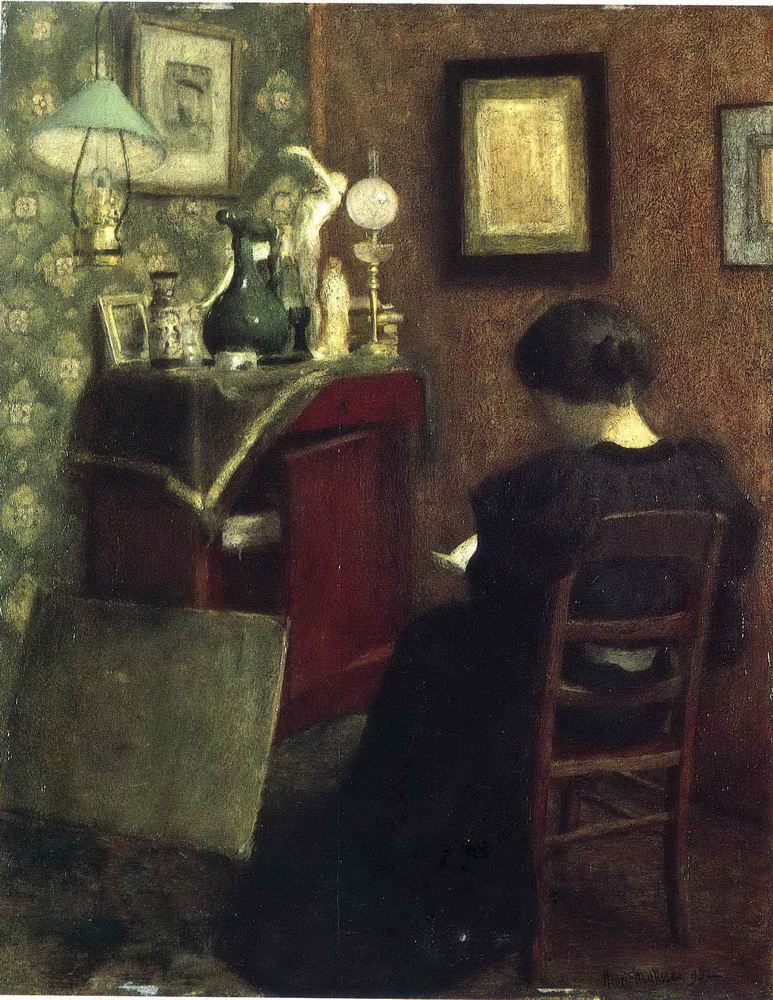
Original Size
(2)The Maid, 1896, Private Collection. Realism.
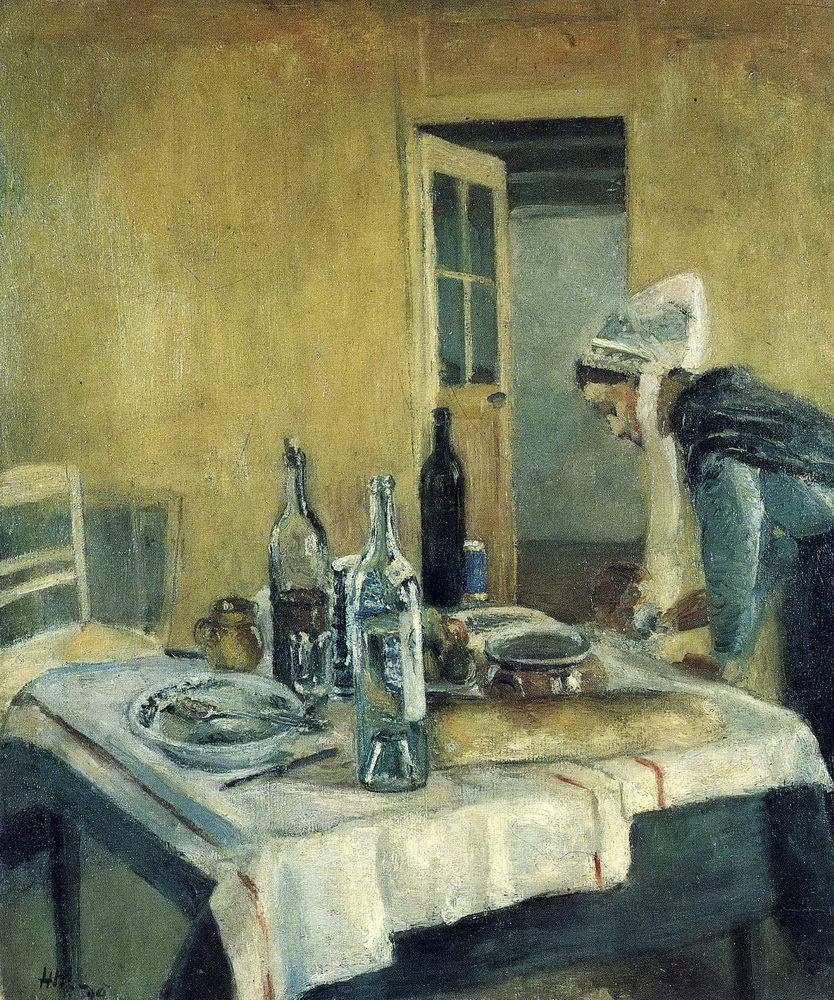
Original Size
(3)The Dinner Table, Start Date: 1896, Completion Date: 1897, Private Collection. Realism.
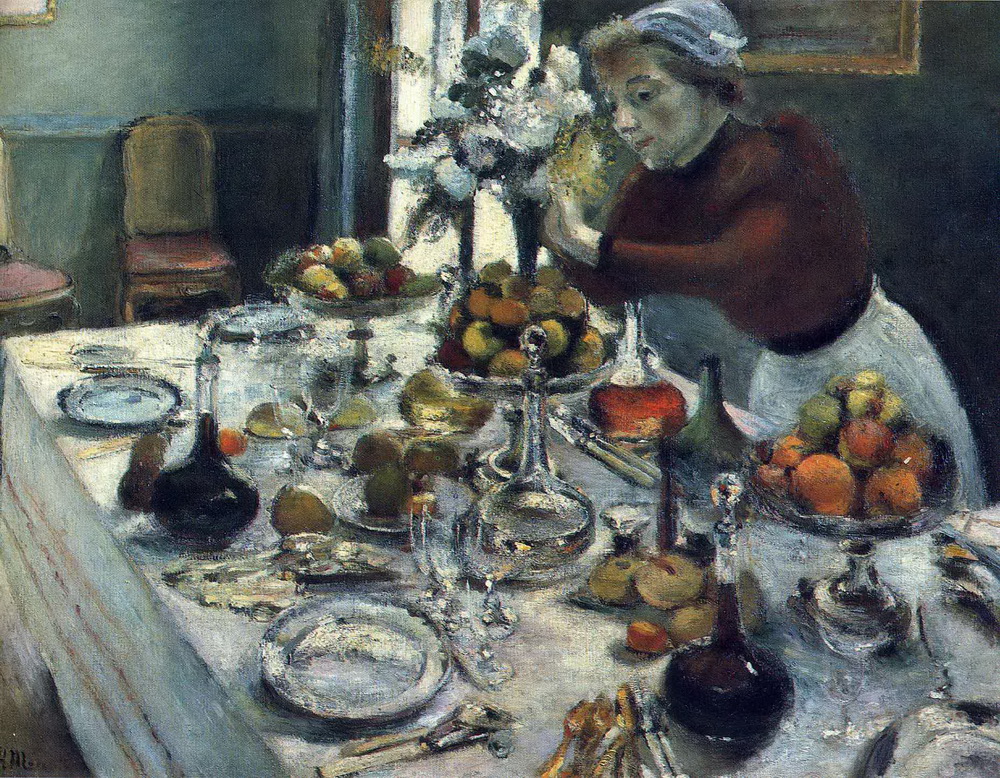
Original Size
(4)Woman with a Hat, 1905. Fauvism.
It is believed that Matisse used his wife as a model for this painting, which garnered much negative criticism when it was displayed at the Salon D&Automne, in 1905. It was this exhibition that the term “fauve,” which translates into “wild” or “beastly,” was coined, by art critic Louis Vauxcelles, who referred to the paintings as beastly, a comment that was printed in a public newspaper and freely tossed around in public. The painting was purchased, however, by Gertrude and Leo Stein, delivering a bit of good news to Matisse, who had been demoralized at the negative receptions his works had garnered.
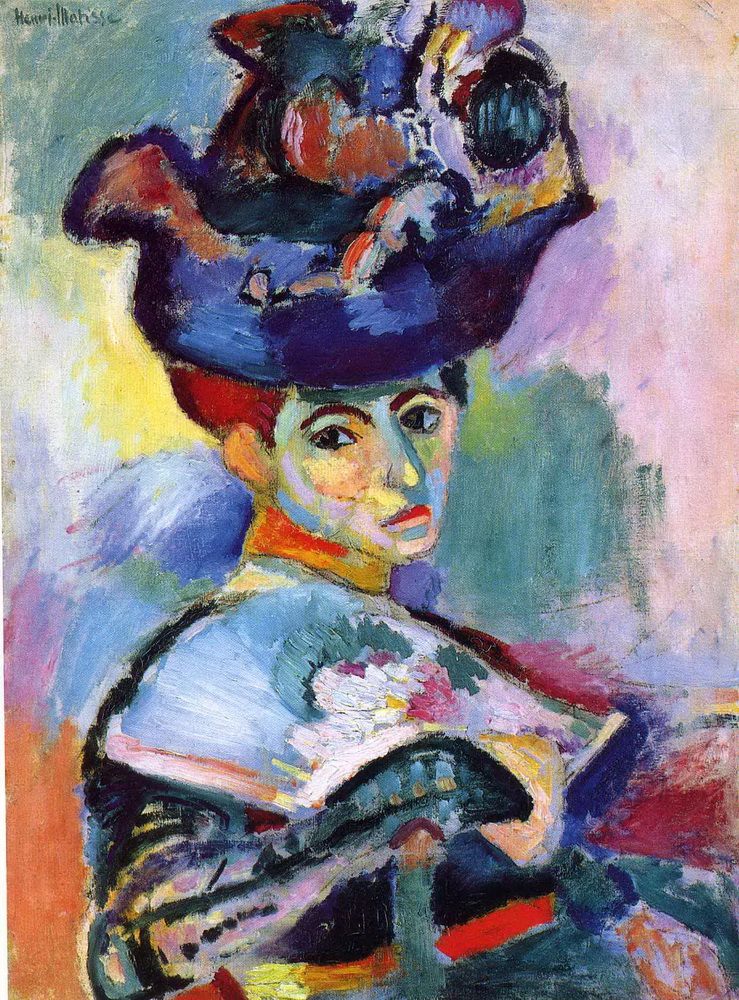
Original Size
(5)Manila Shawl, 1911, Kunstmuseum Basel, Basel, Switzerland. Post-Impressionism.
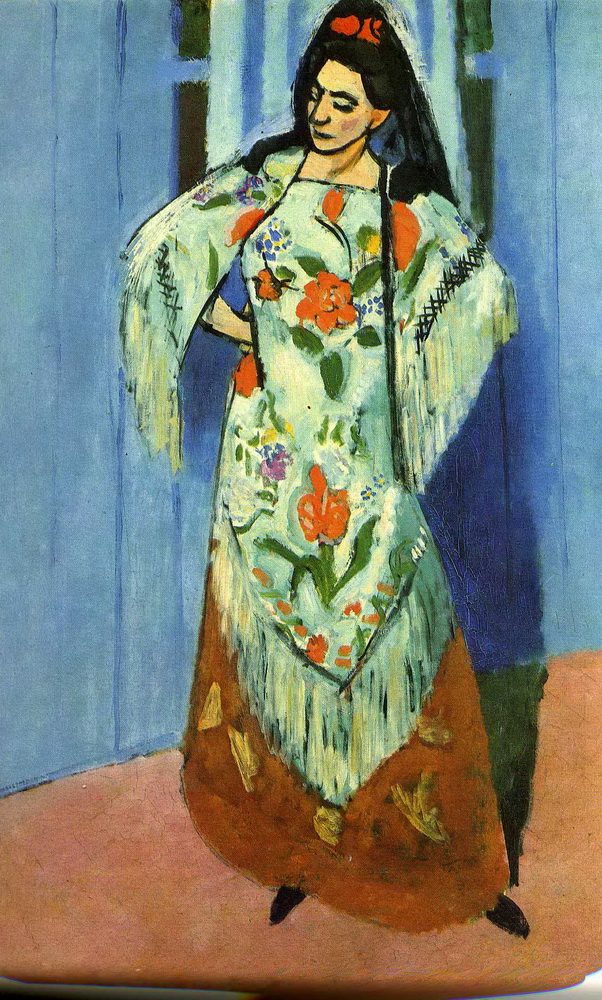
Original Size
(6)The Joy of Life, Start Date: 1905, Completion Date: 1906, The Barnes Foundation, Merion, Pennsylvania, USA. Fauvism.

(7)Harmony in Red, 1908. Fauvism.
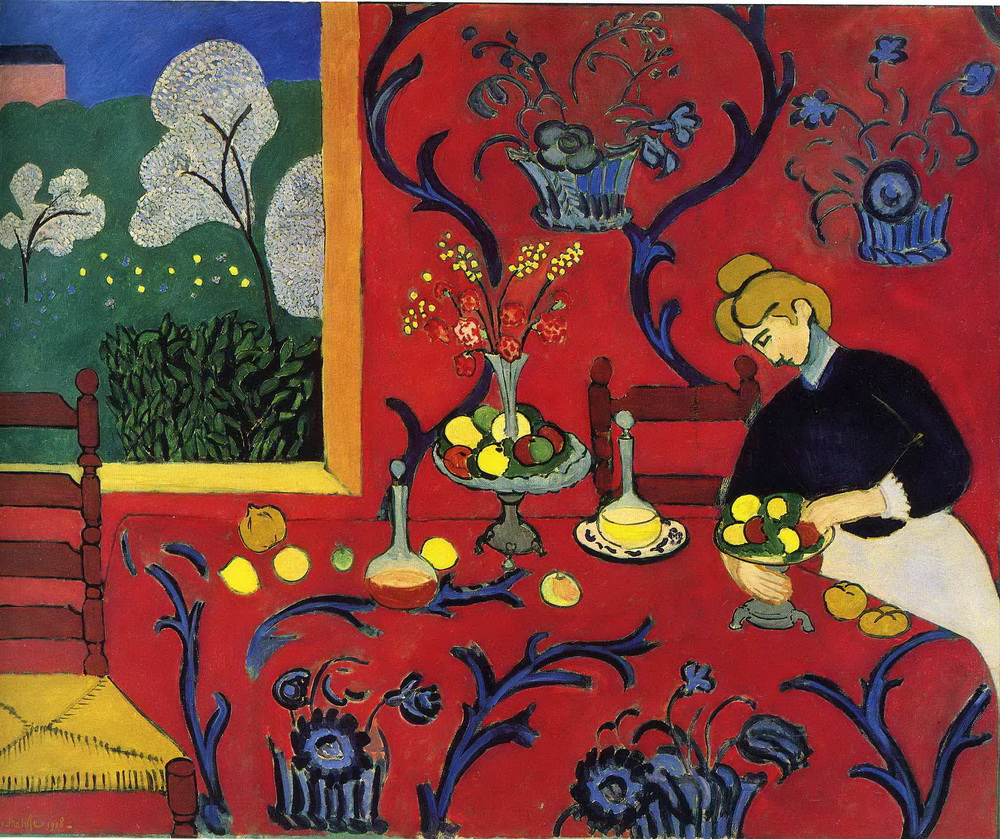
Original Size
(8)The Pink Studio, 1911, Pushkin Museum of Fine Art, Moscow, Russia. Fauvism.
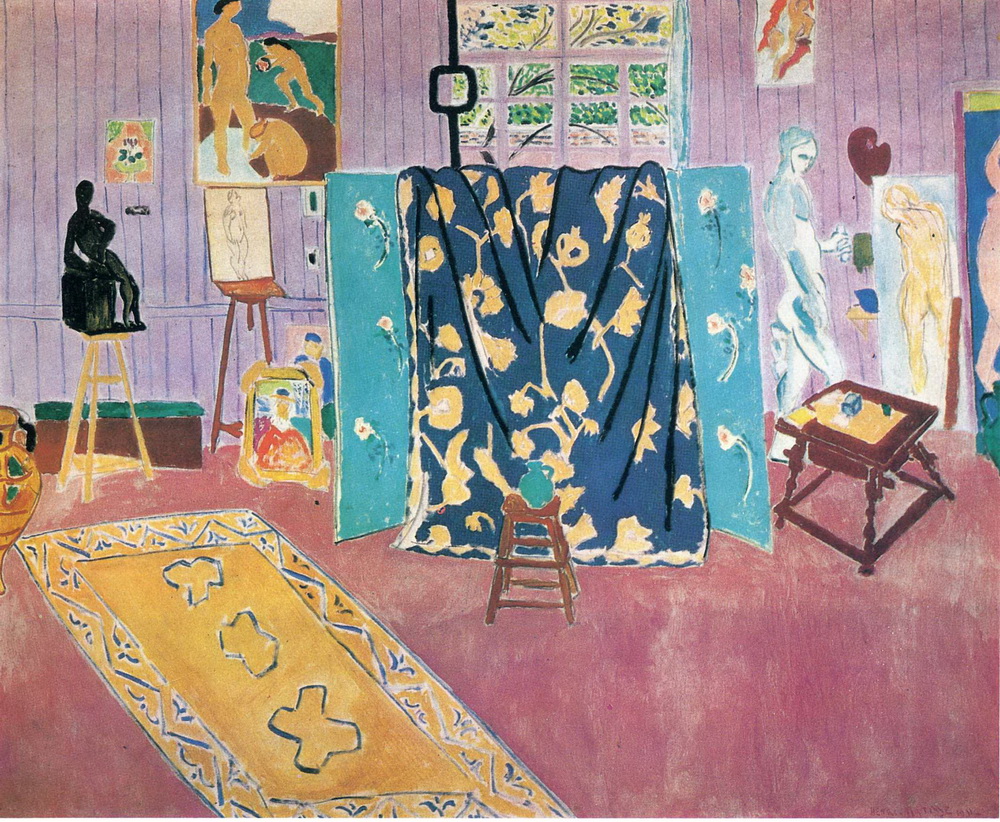
Original Size
(9)The Family of the Artist, 1911, Hermitage, St. Petersburg, Russia. Fauvism.

Original Size
(10)The Music Lesson, 1917. Fauvism.

(11)The Painting Lesson, 1919. Post-Impressionism.
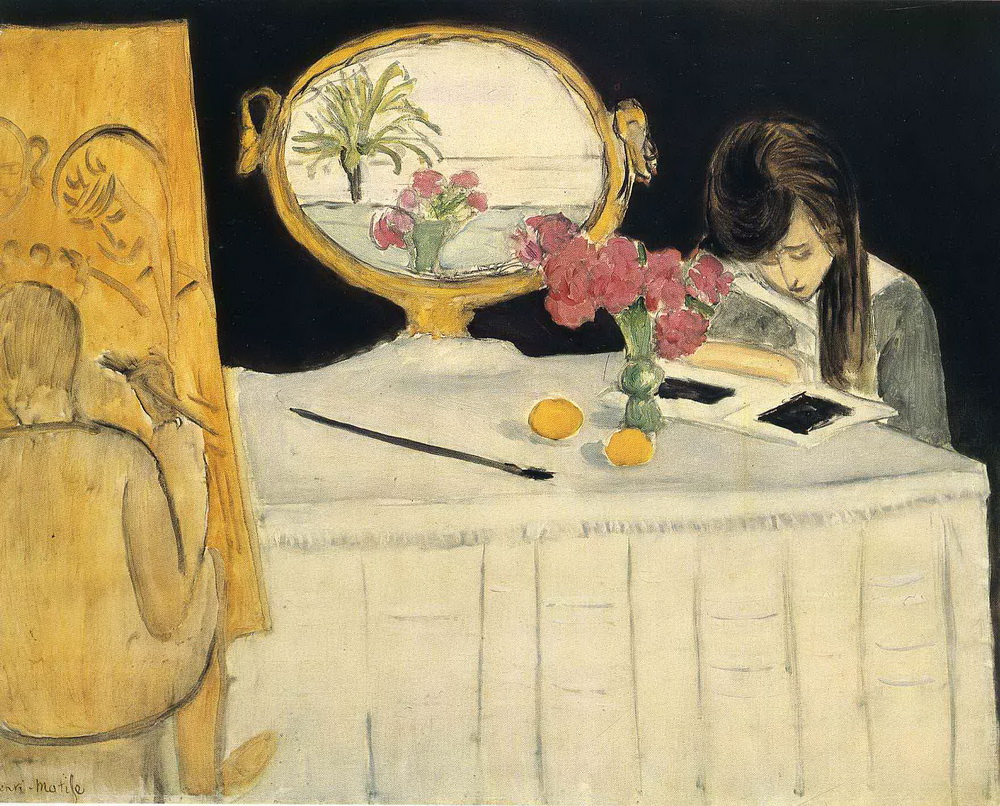
Original Size
(12)The Artist and his model, 1919, Private Collection. Fauvism.
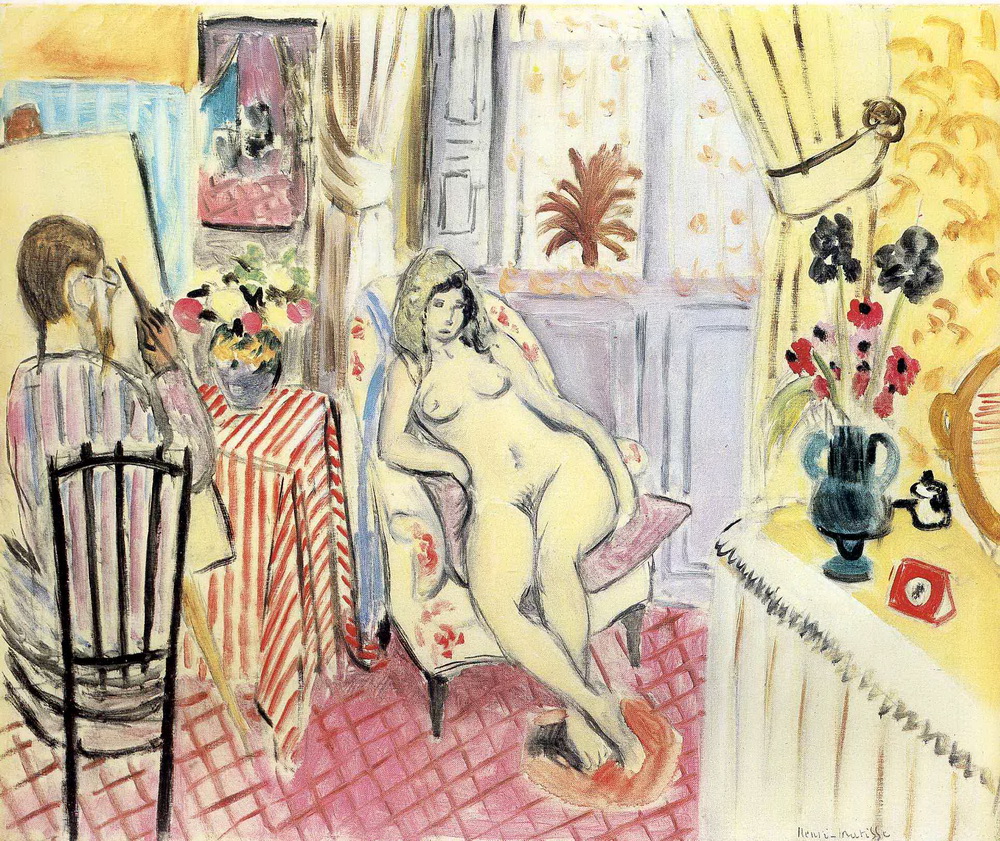
Original Size
(13)Seated Woman, Back Turned to the Open Window, 1922. Post-Impressionism.
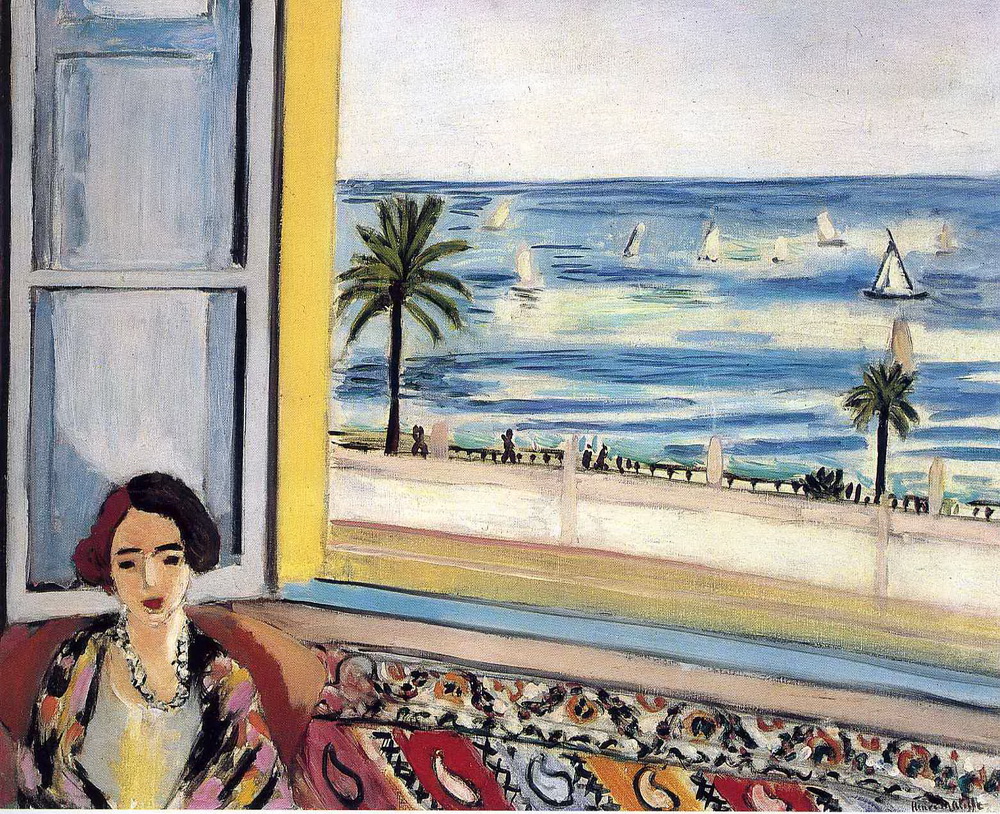
Original Size
(14)Pianist and Checker Players, 1924, National Gallery of Art, Washingon, DC, USA. Post-Impressionism.

Original Size
(15)Odalisque sitting with board, 1928. Orientalism.
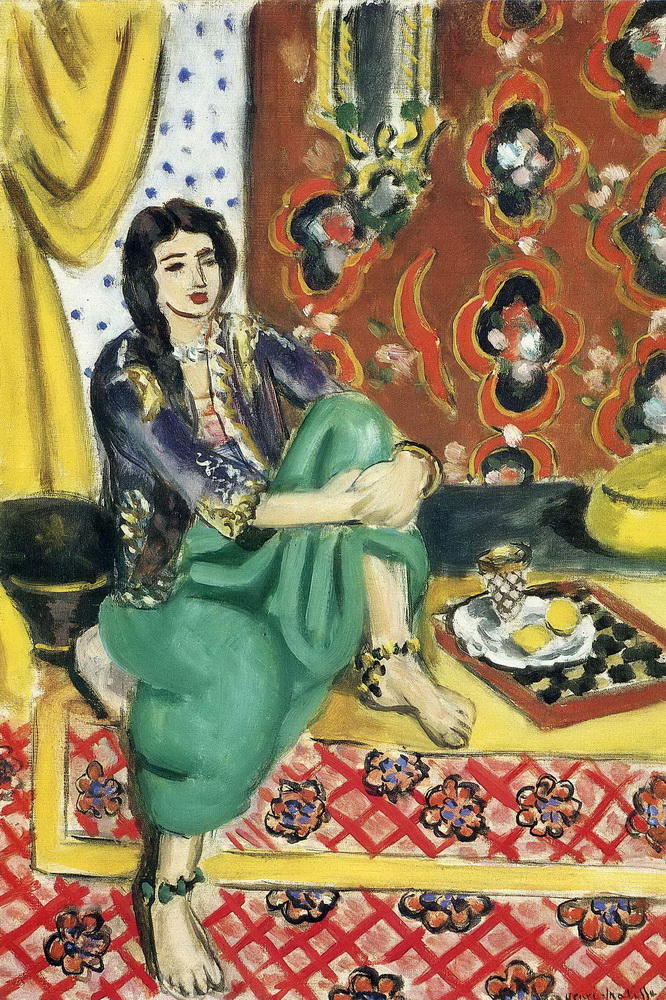
Original Size
(16)Decorative Figure on an Ornamental Background, 1925. Fauvism.
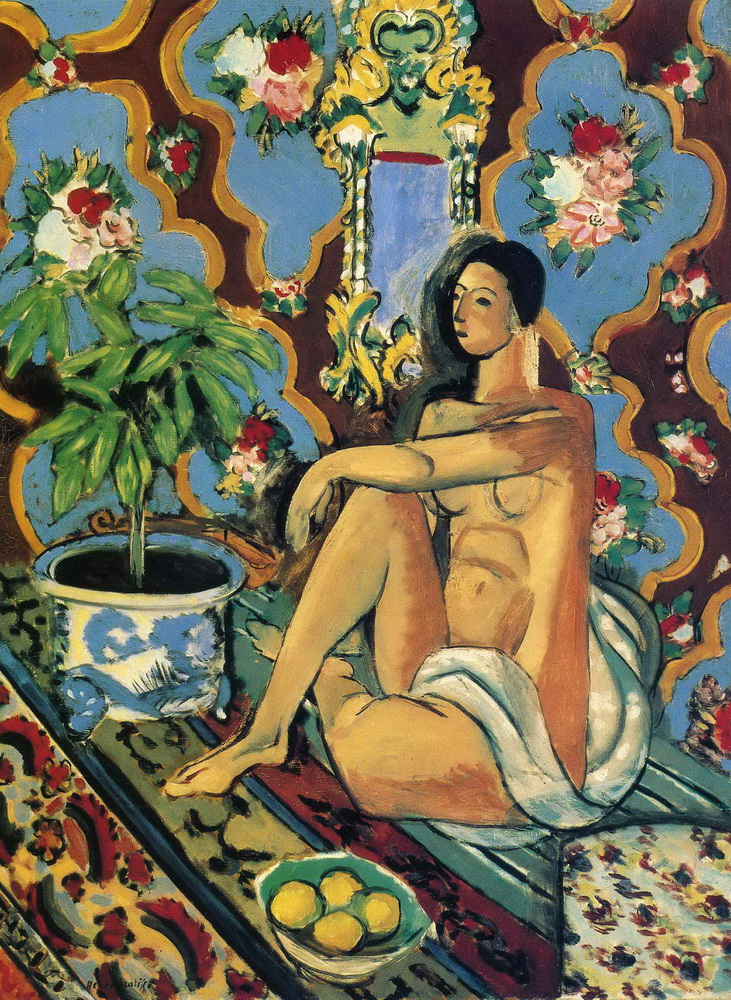
Original Size
(17)The Piano Lesson. Post-Impressionism.
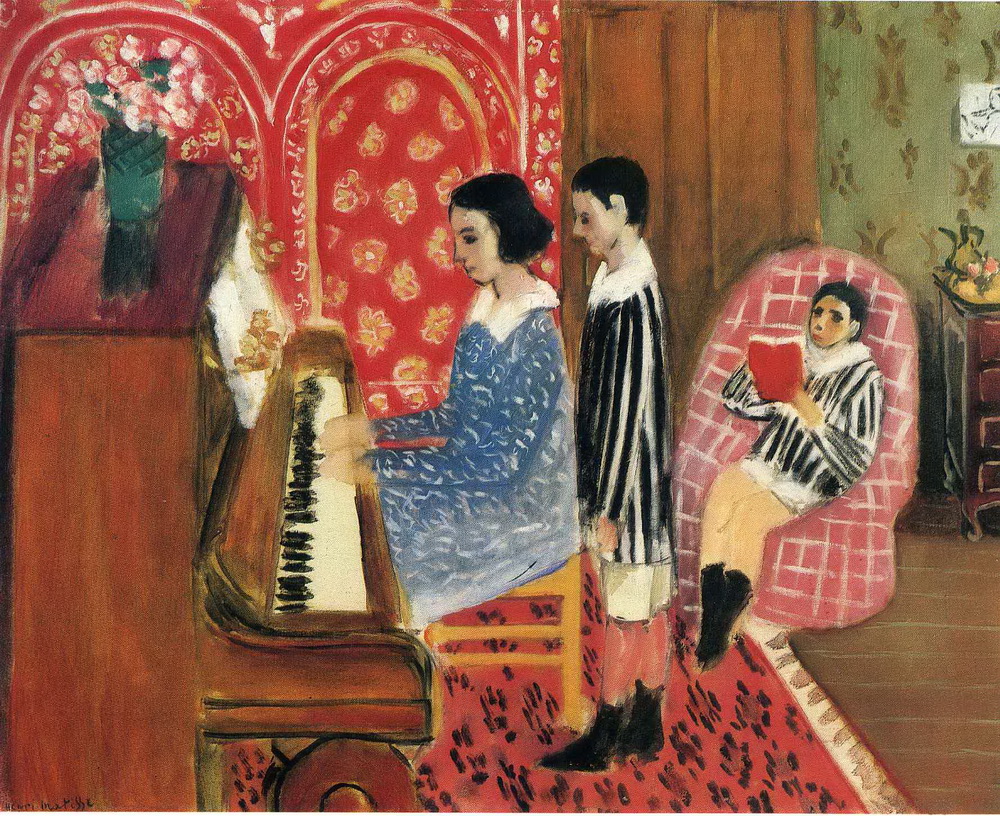
Original Size
(18)Pascal&s Pensees, 1924, Private Collection. Post-Impressionism.
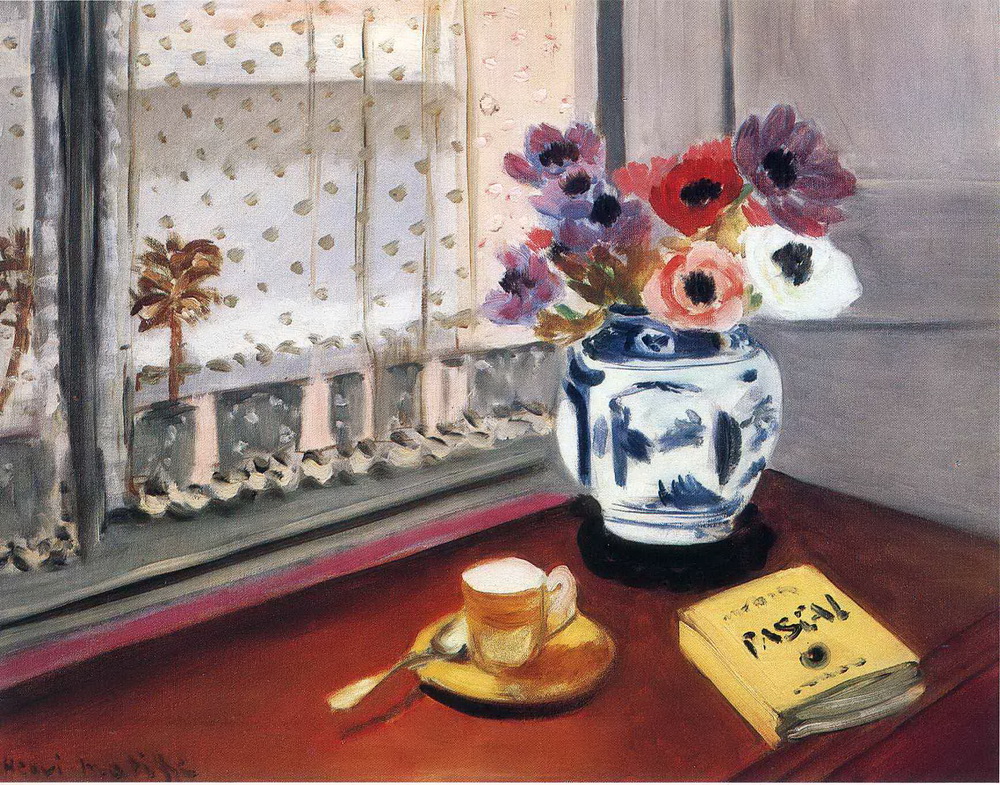
Original Size
(19)Still Life. Post-Impressionism.

Original Size
(20)Still Life with Pineapples. Post-Impressionism.
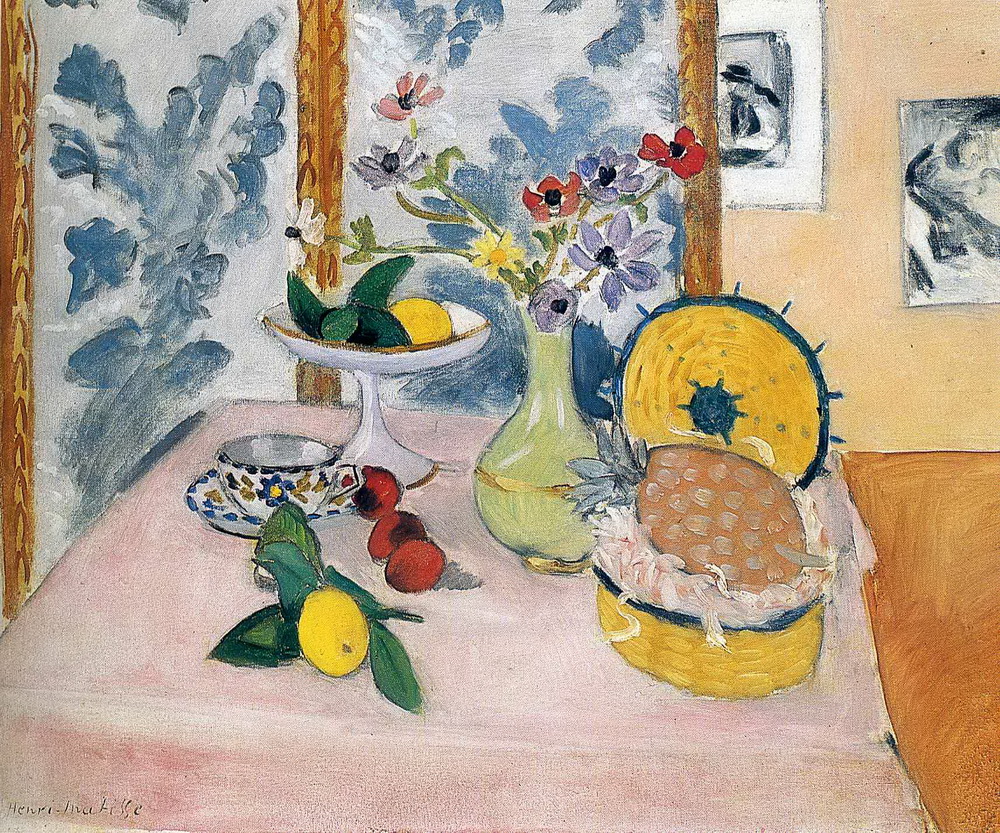
Original Size
(21)Still Life with sleeper, 1940. Fauvism.
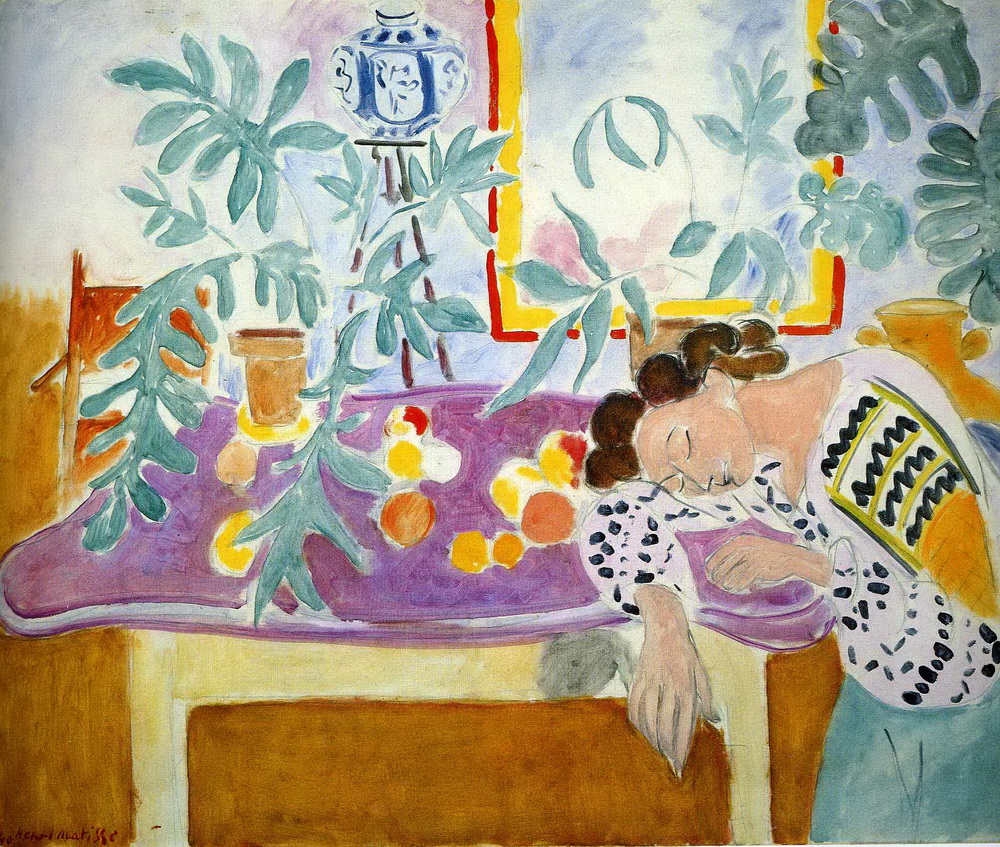
Original Size
(22)Woman by a Window. Post-Impressionism.
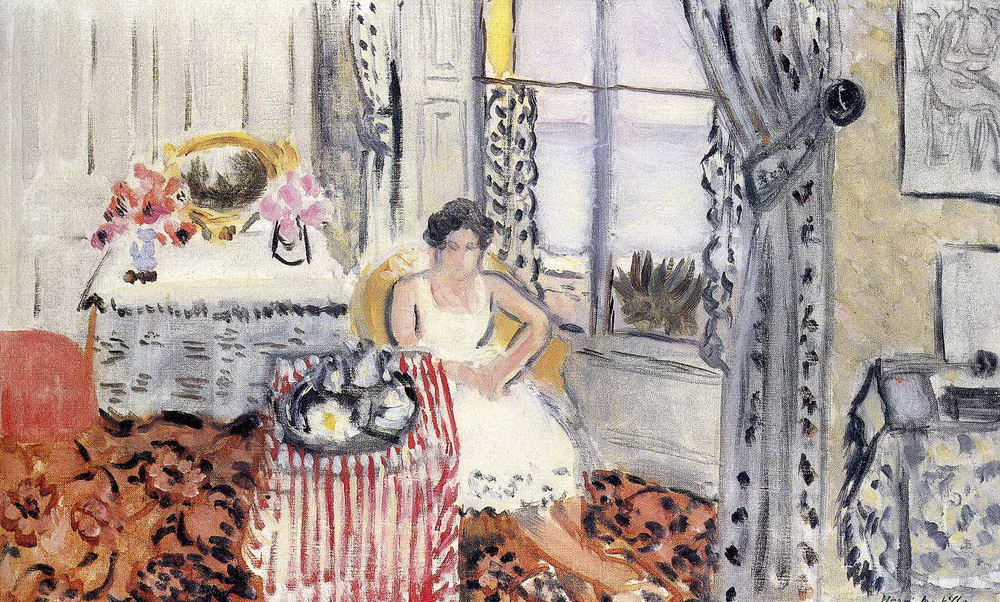
Original Size
(23)Woman. Fauvism.
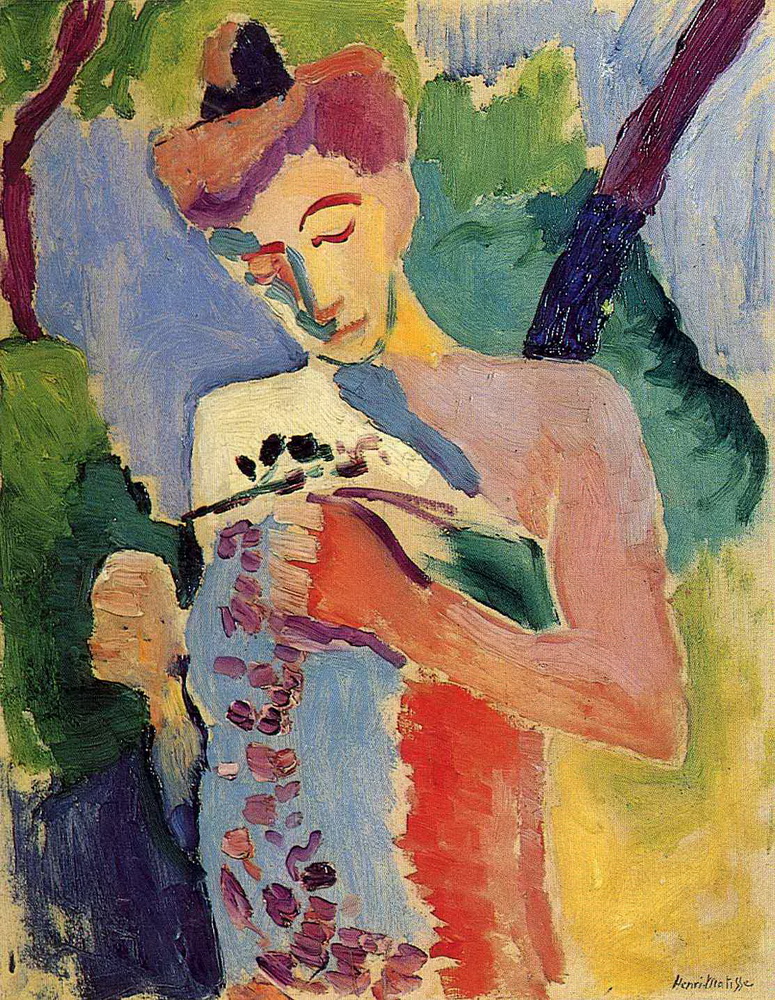
Original Size
(24)Still Life. Pointillism.
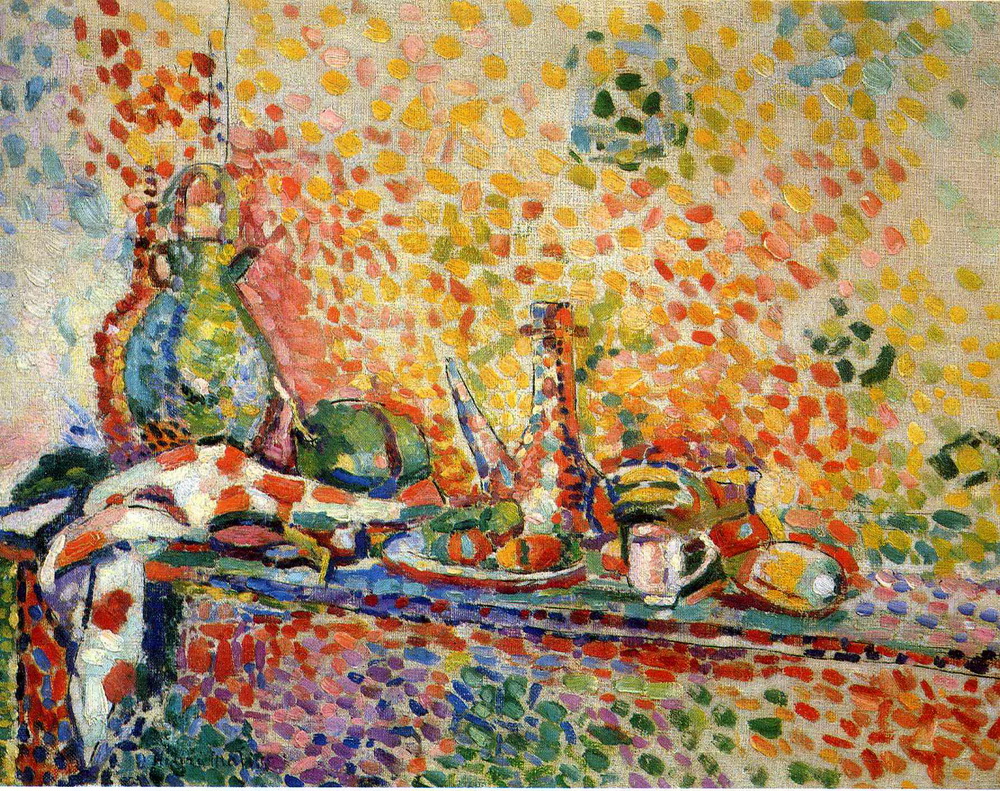
Original Size
(25)Still Life. Pointillism.
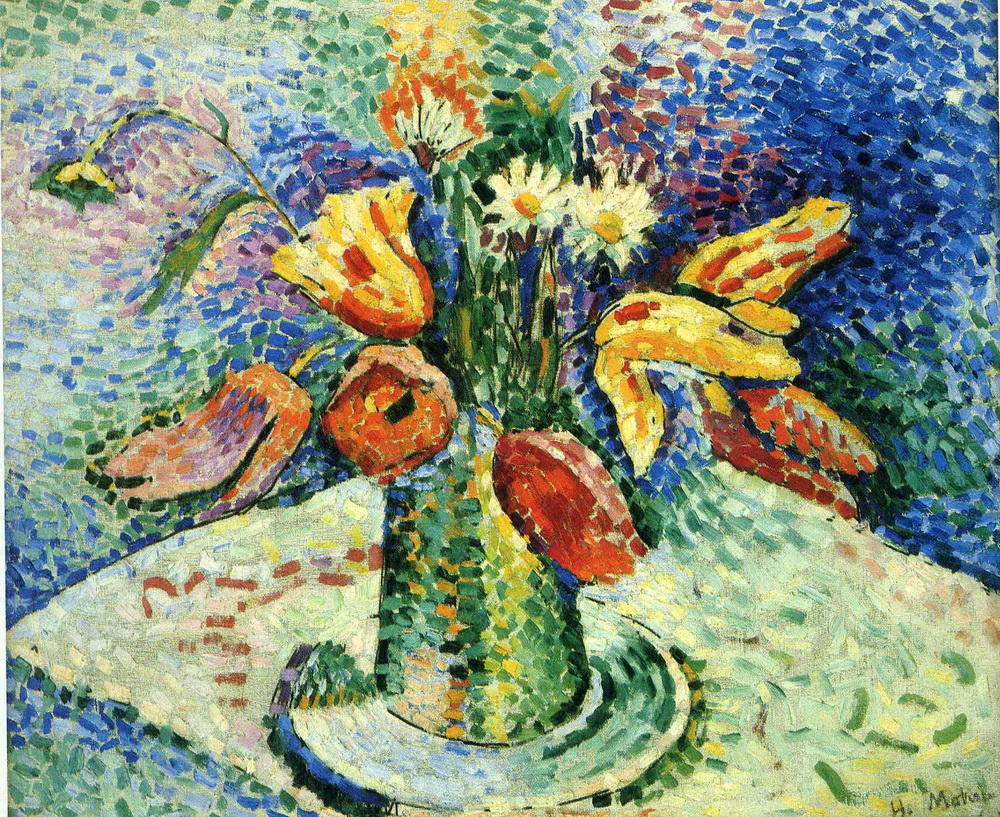
Original Size
(26)not identified. Fauvism.
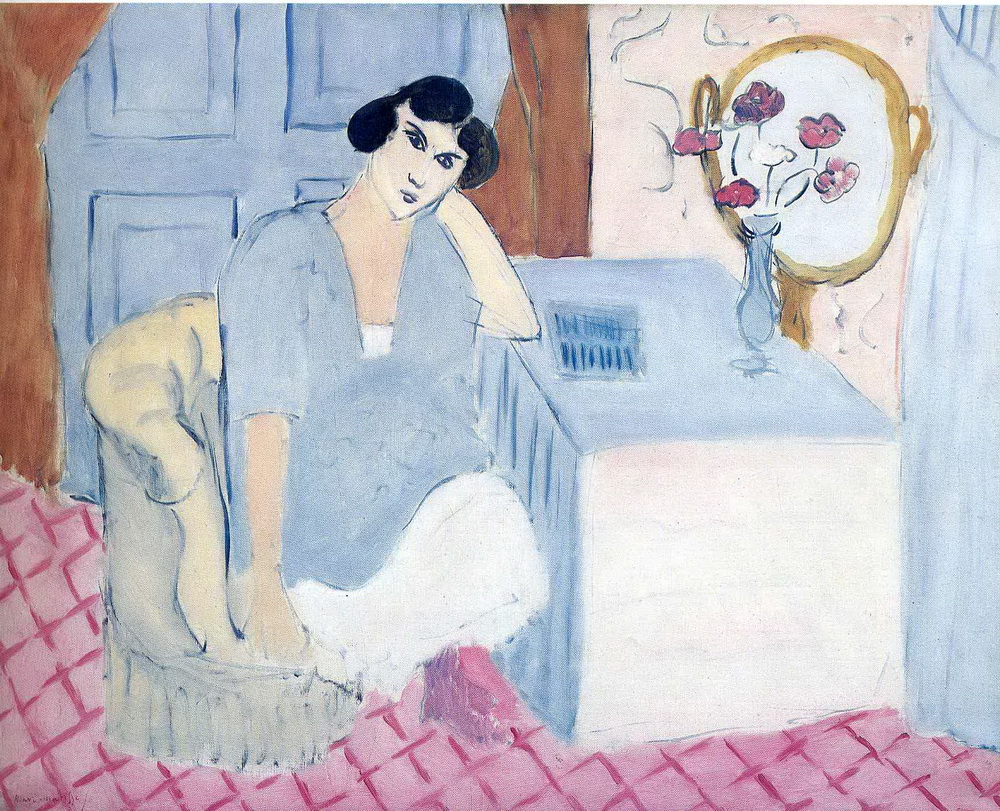
Original Size
(27)Moorish Screen, 1921, Philadelphia Museum of Art, Philadelphia, PA, USA. Fauvism.
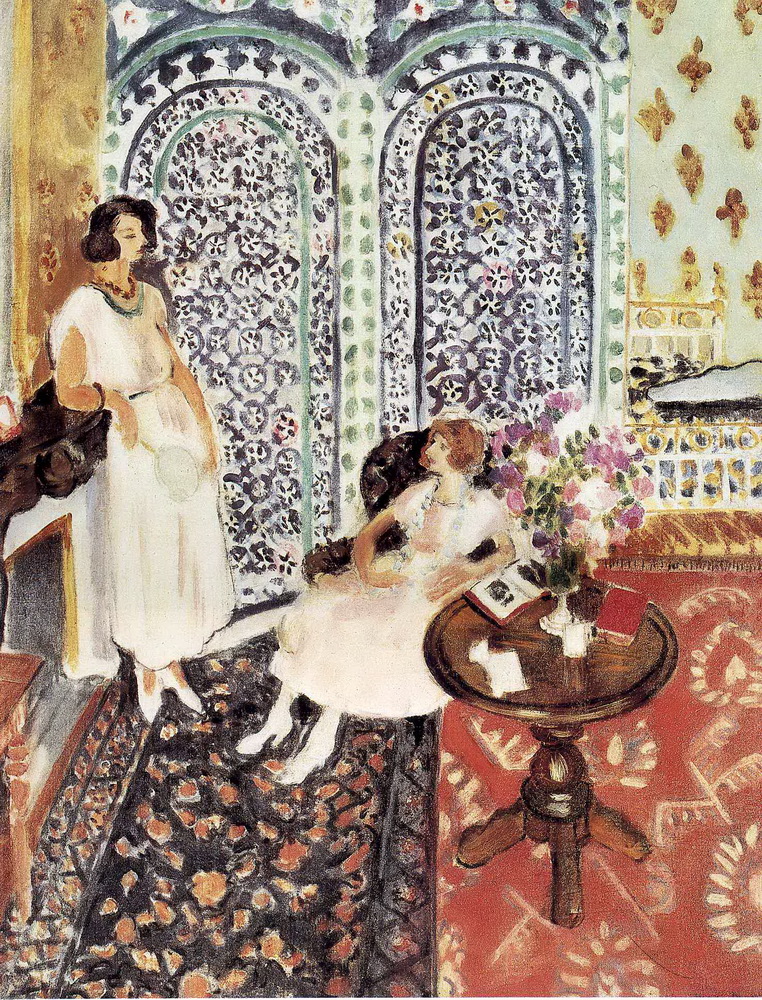
Original Size
(28)not identified. Fauvism.
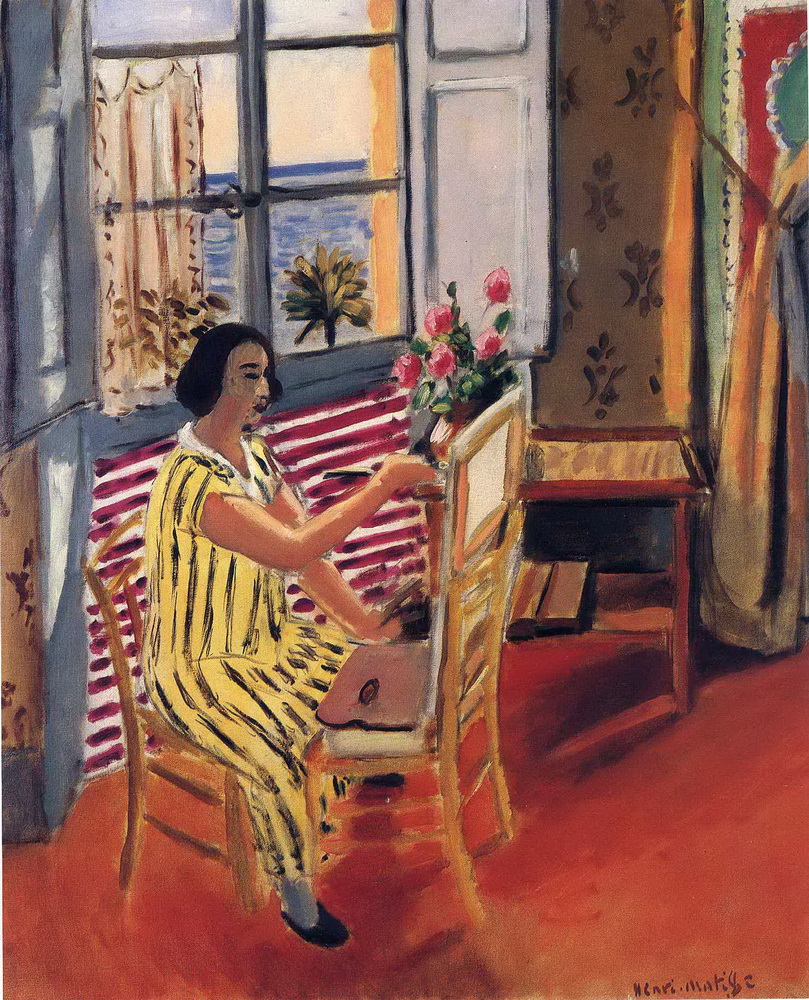
Original Size
(29)not identified. Fauvism.
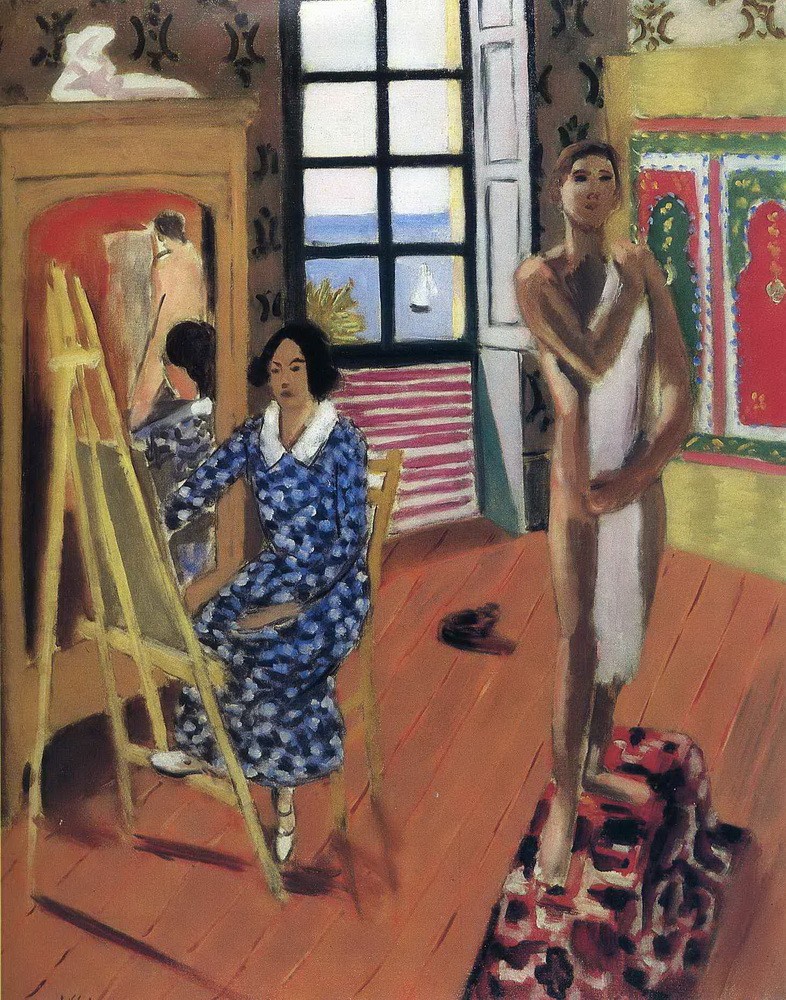
Original Size
(30)Interior with a Violin Case, 1919. Fauvism.
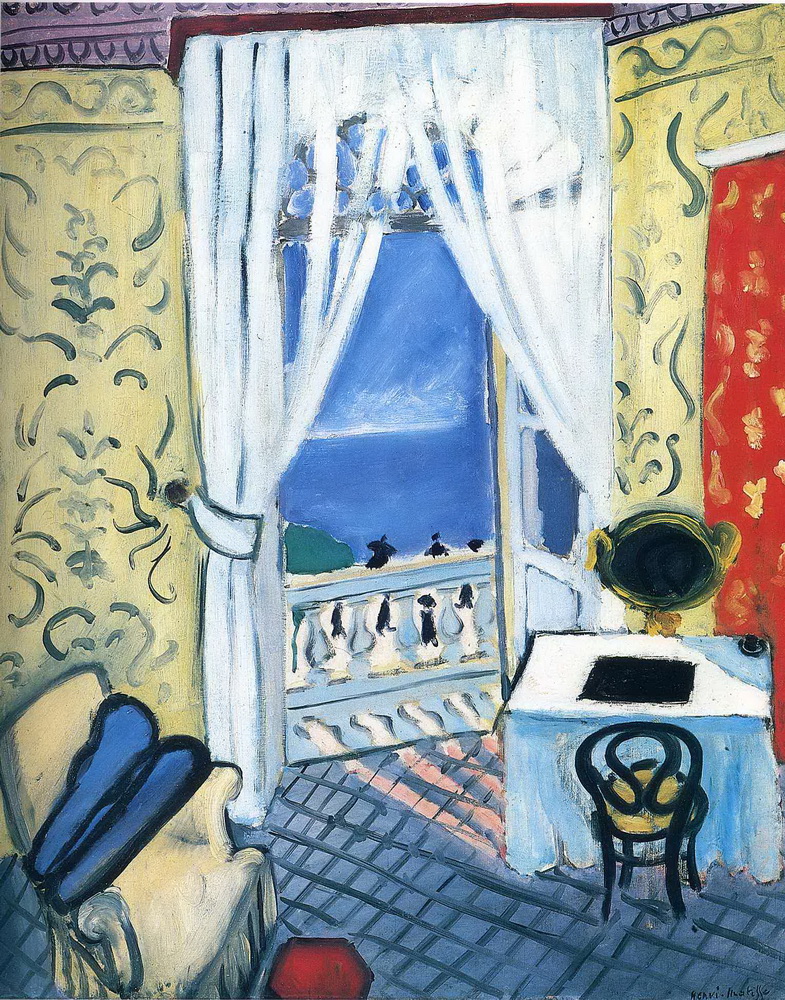
Original Size
(31)Open Window, Etretat, 1920, Private Collection. Post-Impressionism.

(32)Still Life with Blue Tablecloth, 1906, Hermitage, St. Petersburg, Russia. Fauvism.
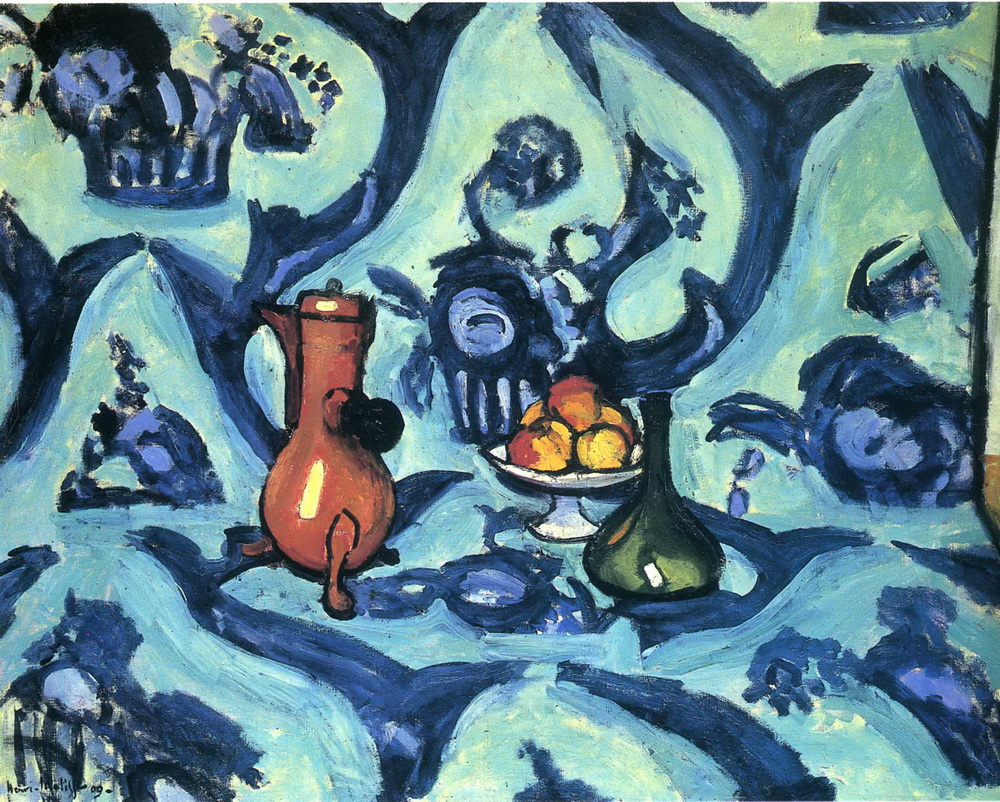
Original Size
(33)Still Life with a Red Rug, 1906, Musée des Beaux-Arts, Grenoble, France. Fauvism.
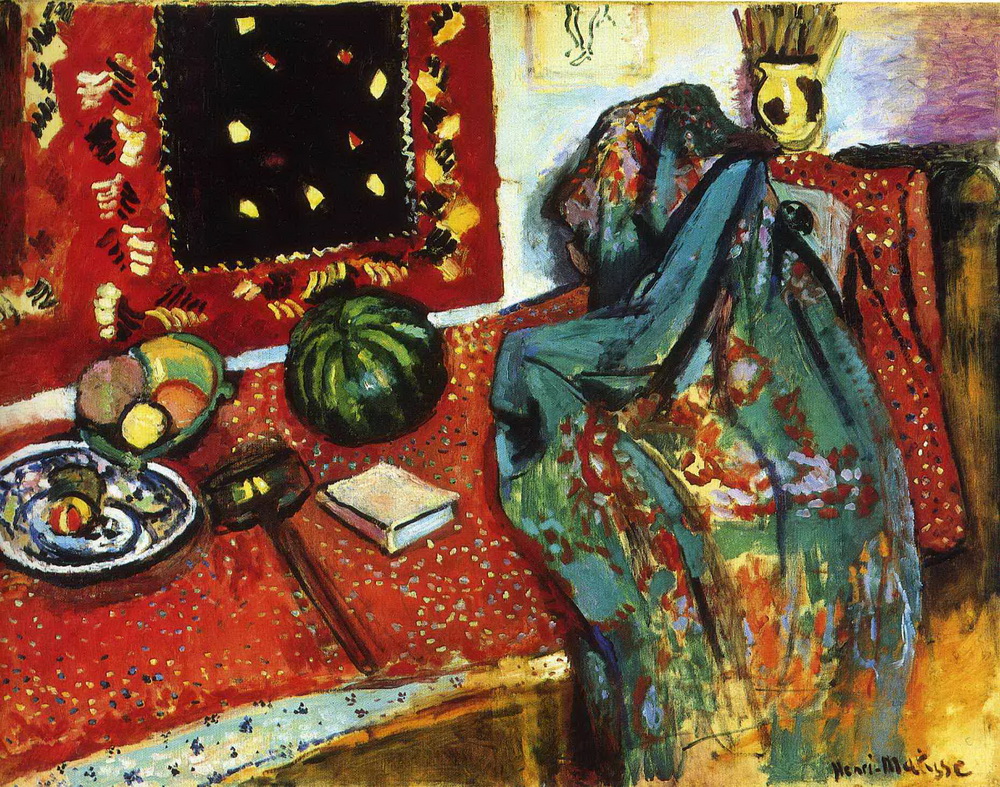
Original Size
(34)Still life with aubergines, 1911. Fauvism.
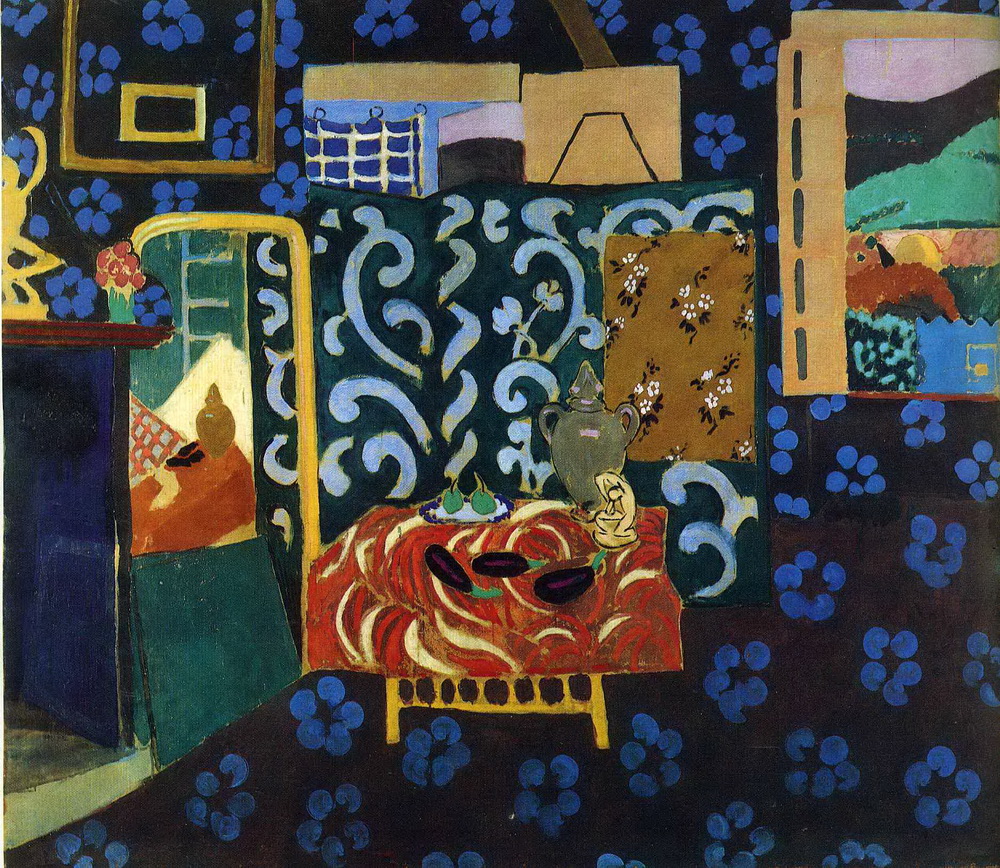
Original Size
(35)Red Studio, 1911. Expressionism.
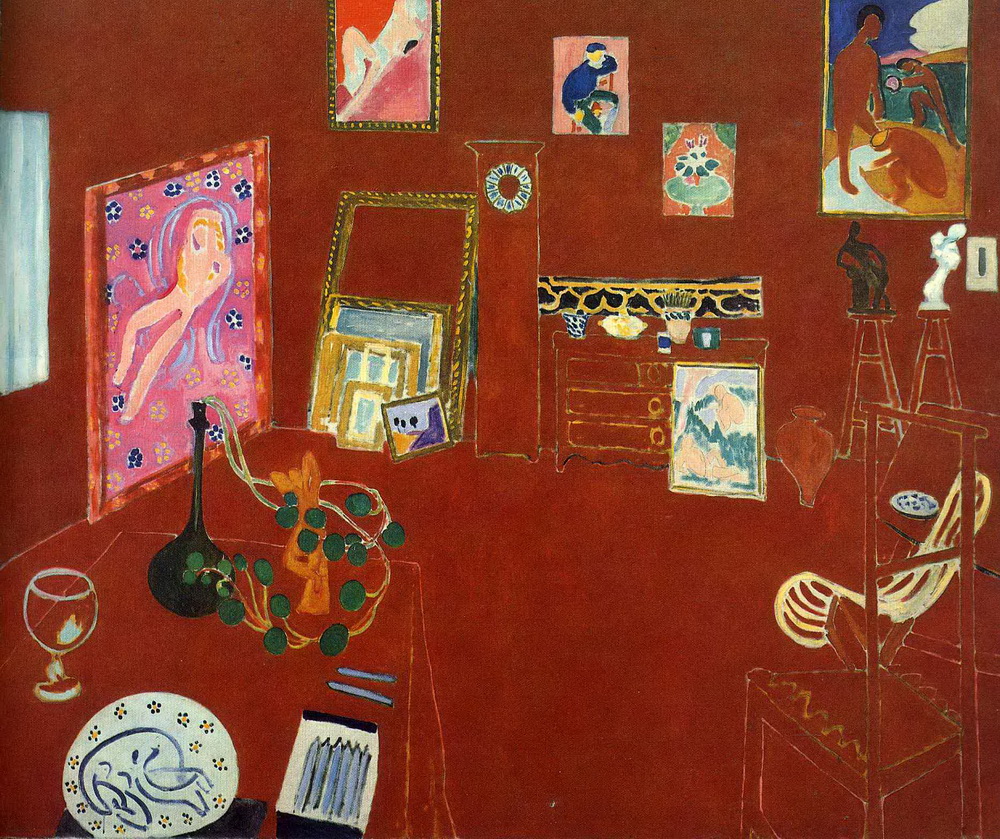
Original Size
(36)Still Life with Flowers, Museum Flokway, Essen. Fauvism.
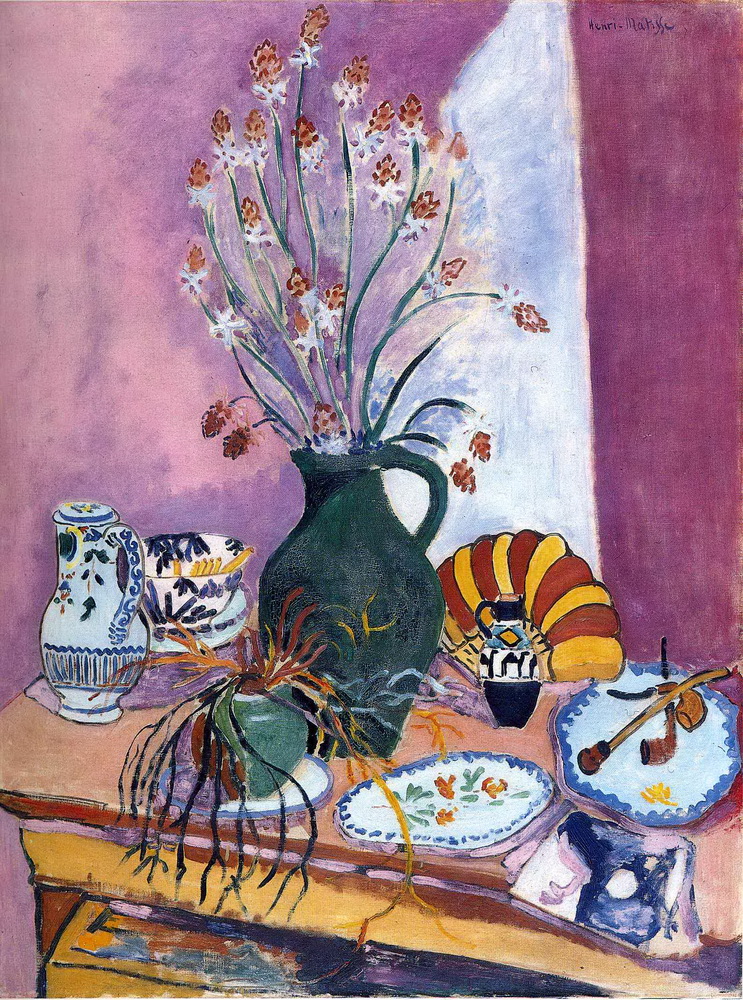
Original Size
(37)Goldfish, 1911, Pushkin Museum of Fine Art, Moscow, Russia. Fauvism.
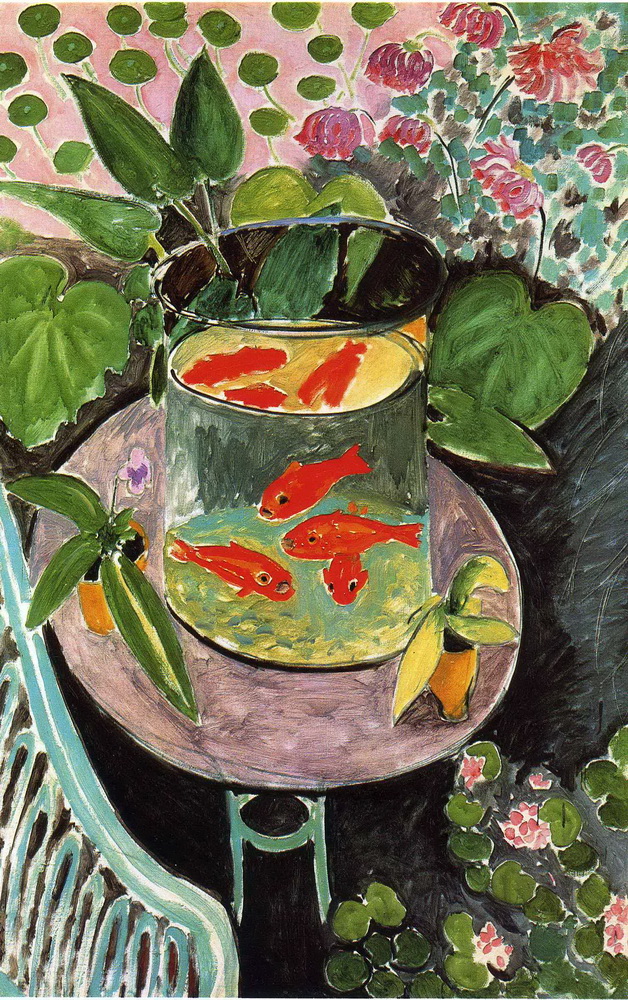
Original Size
(38)Bouquet of mixed flowers, Start Date: 1916, Completion Date: 1917, San Diego Museum of Art (United States). Fauvism.
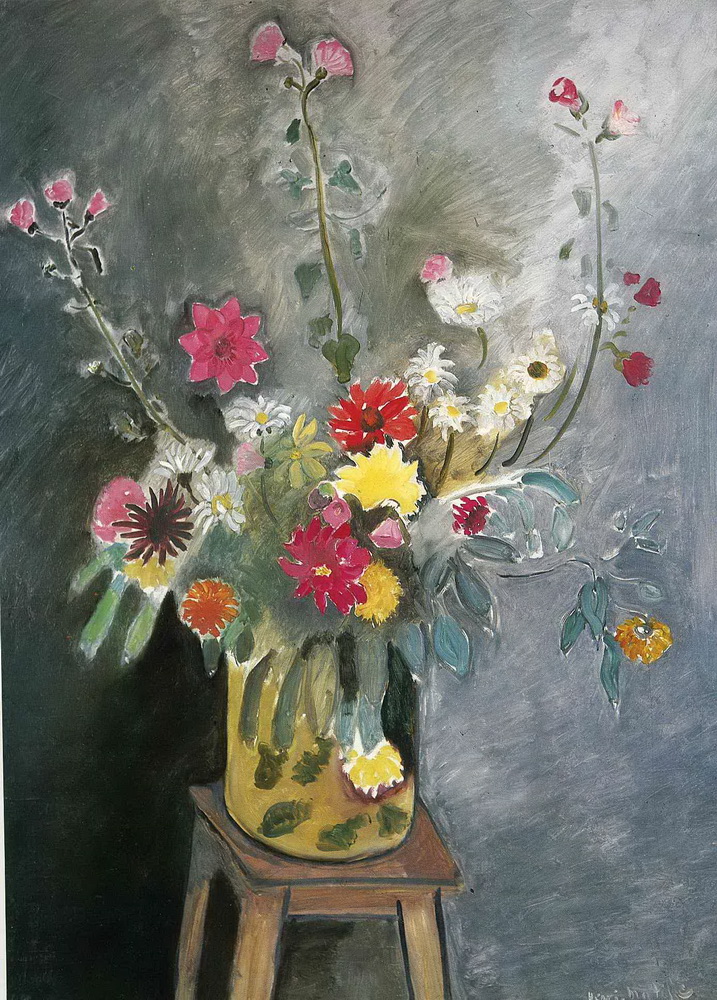
Original Size
(39)Still Life with Books and Candle, 1890, Private Collection. Realism.
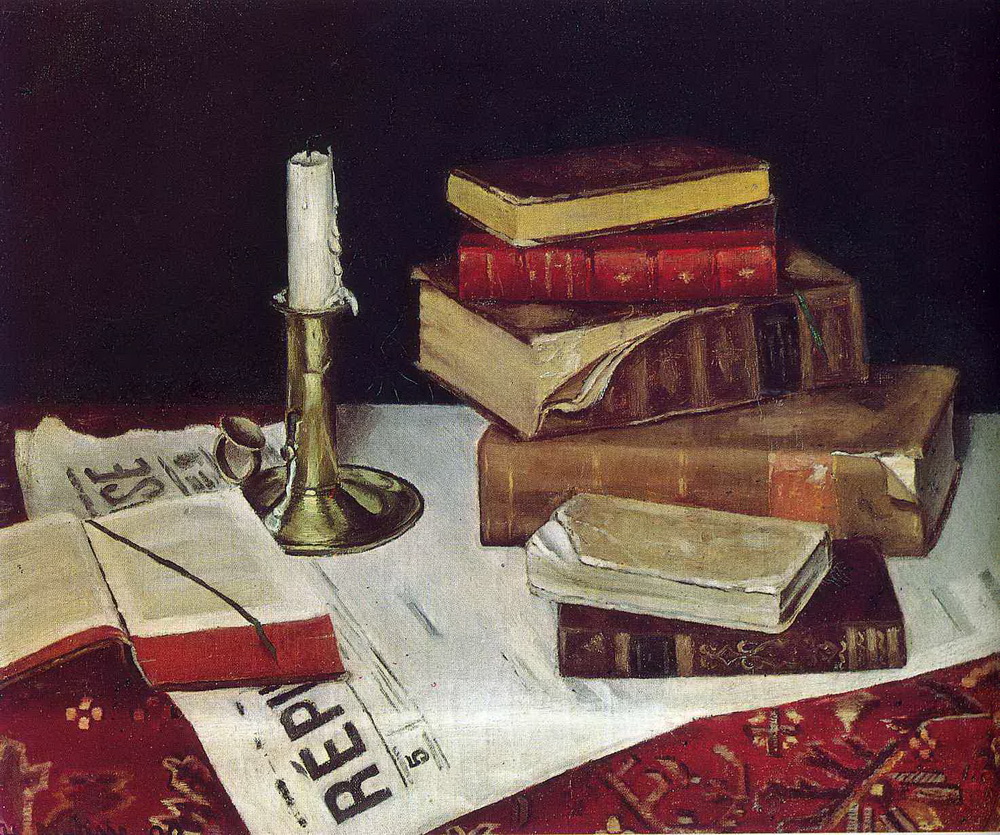
Original Size
(40)The Window, 1916, Detroit Institute of Arts, Detroit, MI, USA. Fauvism.
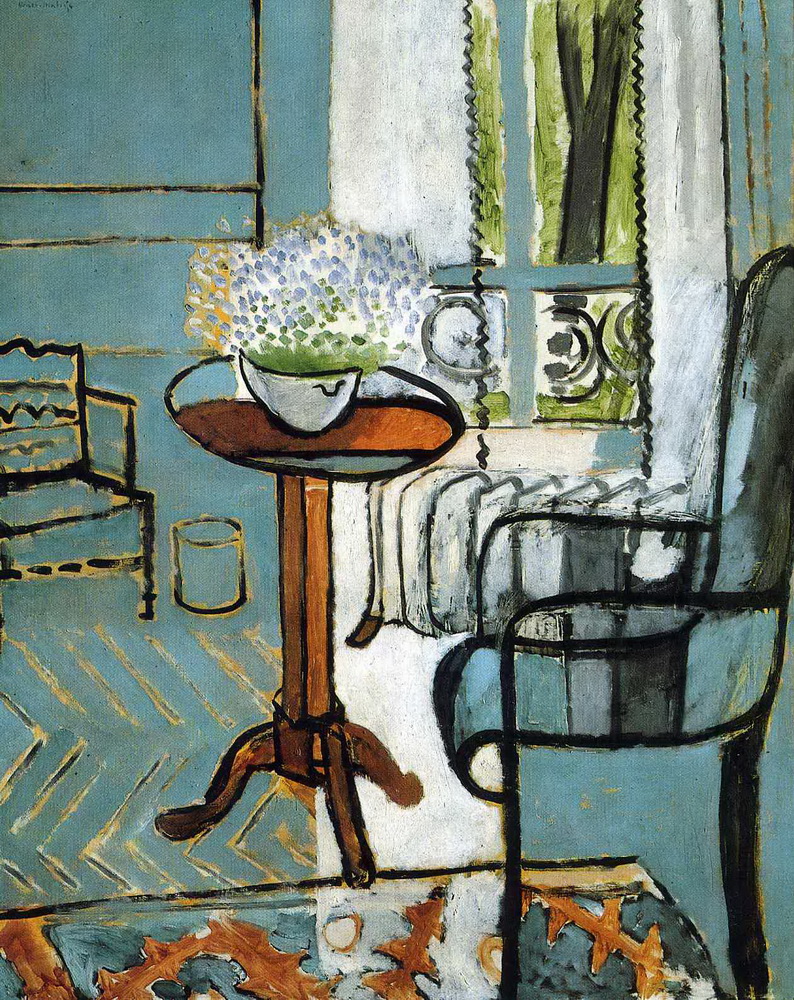
Original Size
(41)Luxury, Serenity and Pleasure, 1904, Musée d&Orsay, Paris, France. Pointillism.

Original Size
(42)The Terrace, St. Tropez, 1904, Isabella Stewart Gardner Museum, Boston, MA, USA. Post-Impressionism.
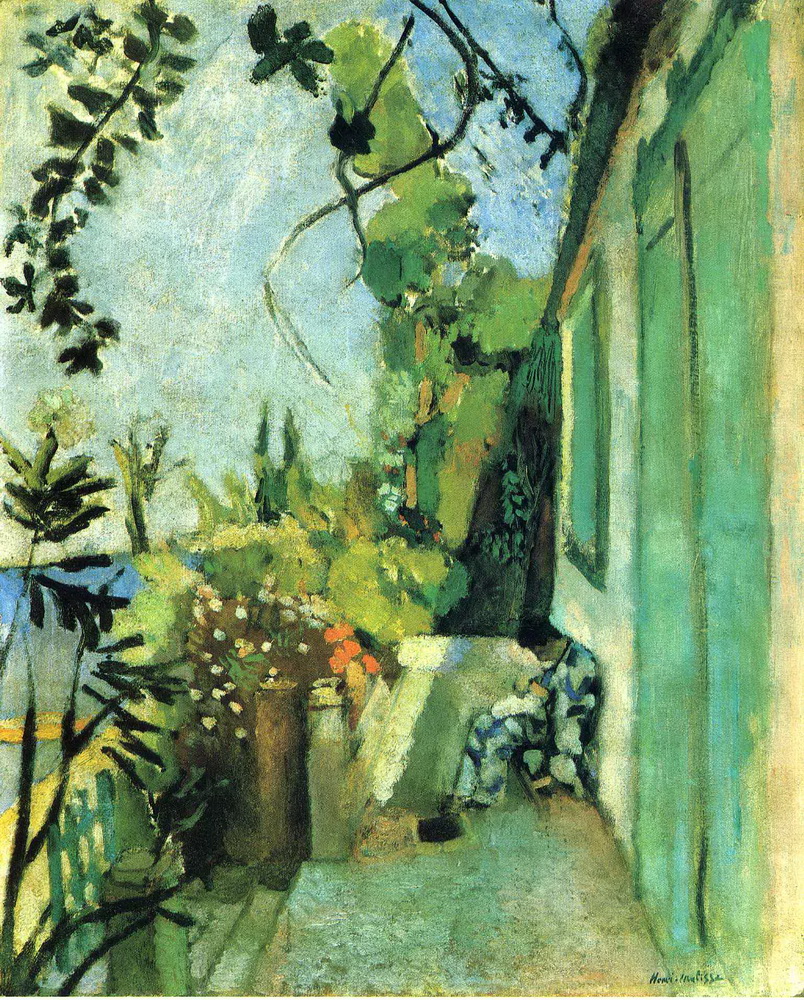
Original Size
(43)The Reader, Marguerite Matisse, 1906, Musée des Beaux-Arts, Grenoble, France. Post-Impressionism.
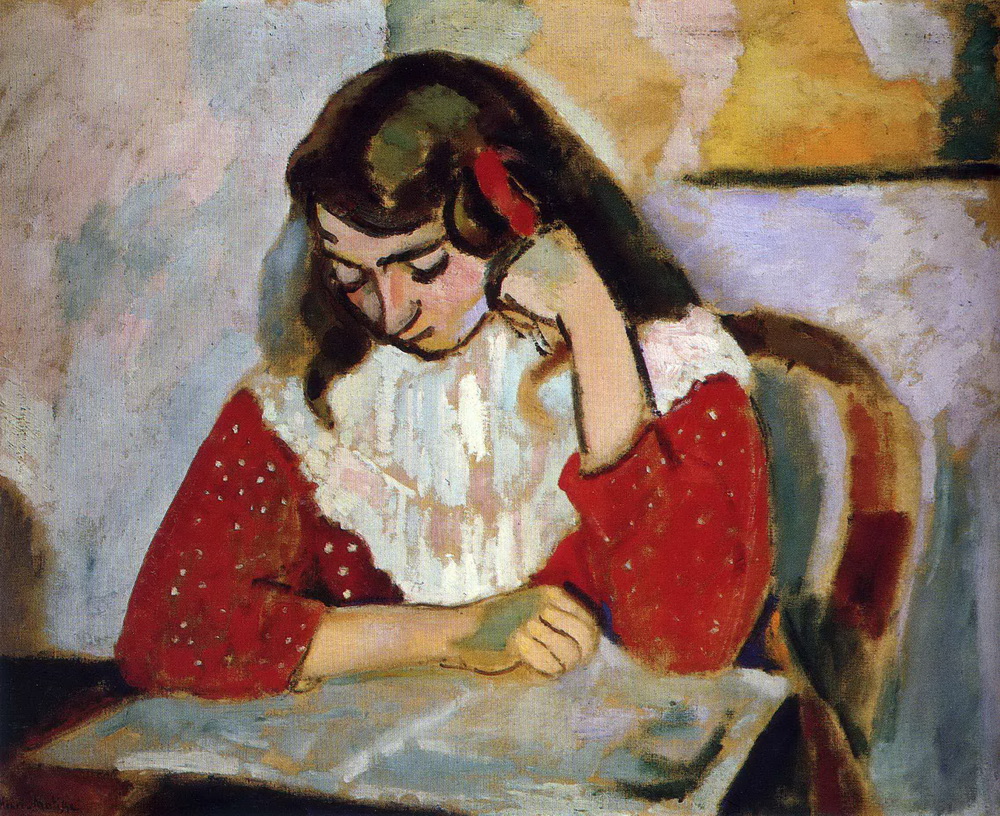
Original Size
(44)Calla Lilies, Irises and Mimosas, 1913, Pushkin Museum of Fine Art, Moscow, Russia. Fauvism.

Original Size
(45)Basket with Oranges, 1913, Musée du Louvre, Paris, France. Fauvism.
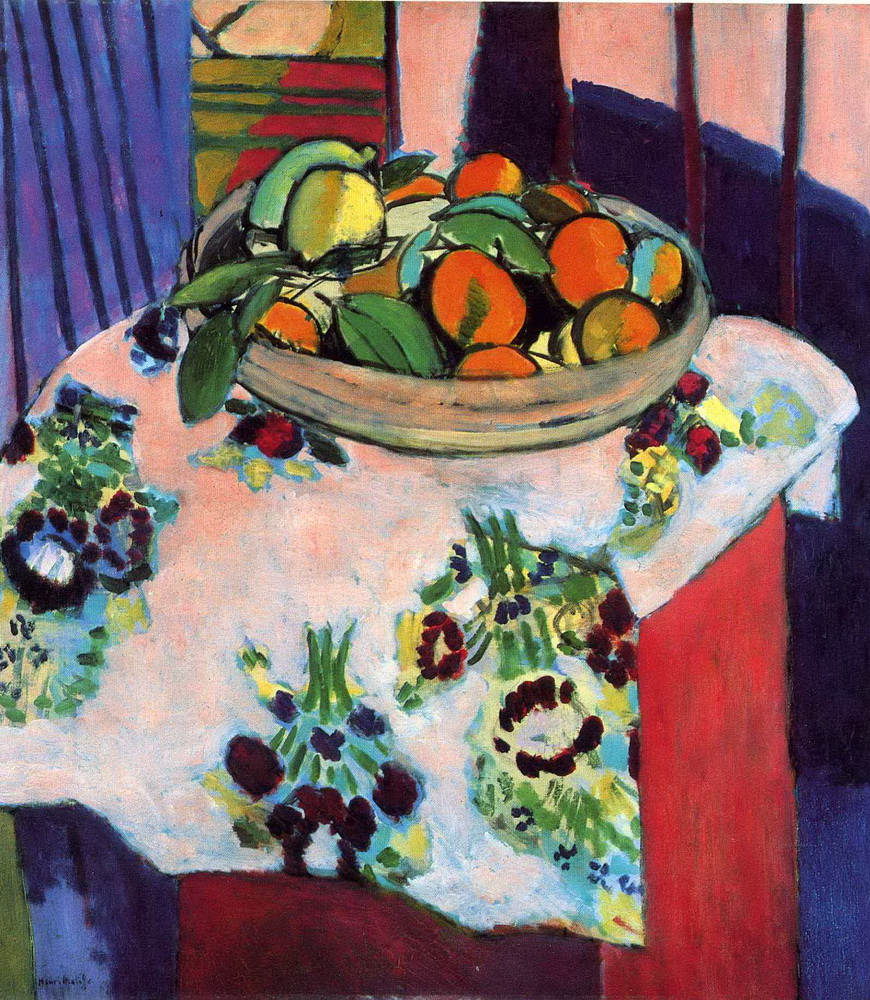
Original Size
(46)Notre Dame, 1914, Private Collection. Fauvism.
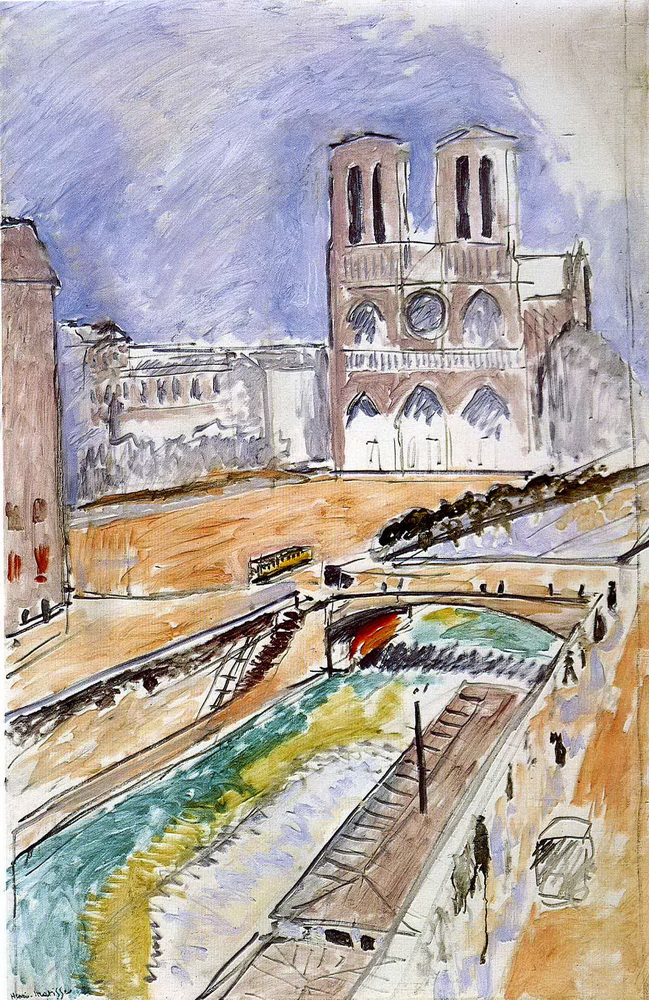
Original Size
(47)My Room at the Beau-Rivage, 1918. Fauvism.
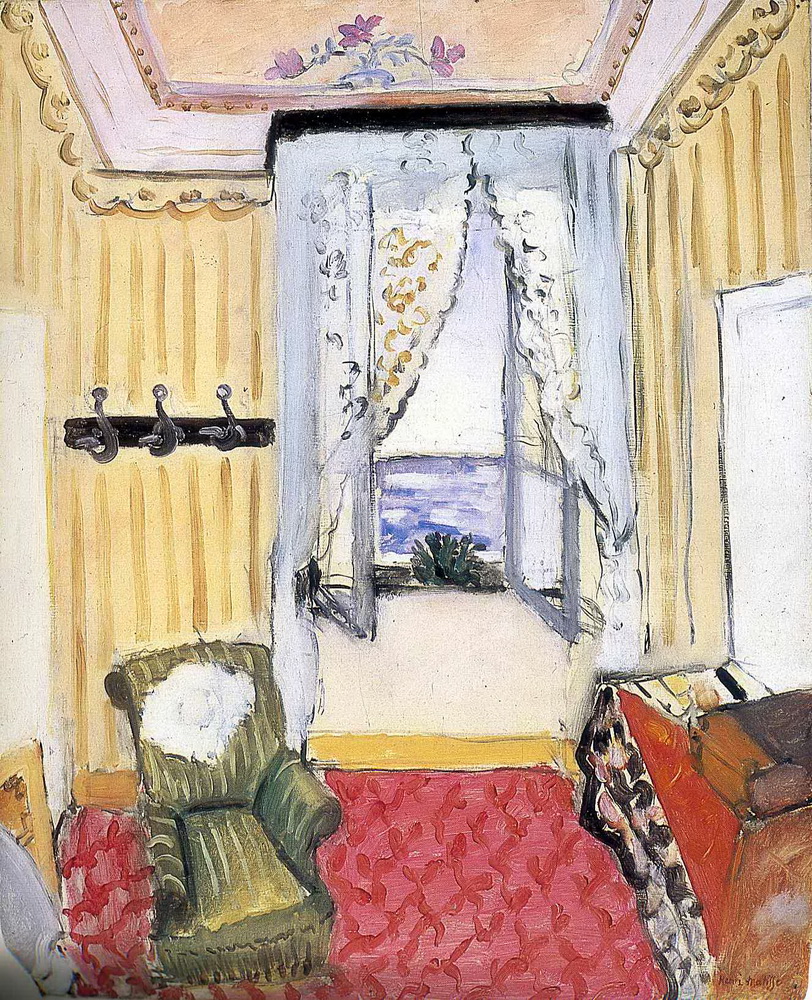
Original Size
(48)Tea in the Garden, 1919, Los Angeles County Museum of Art, Los Angeles, CA, USA. Post-Impressionism.
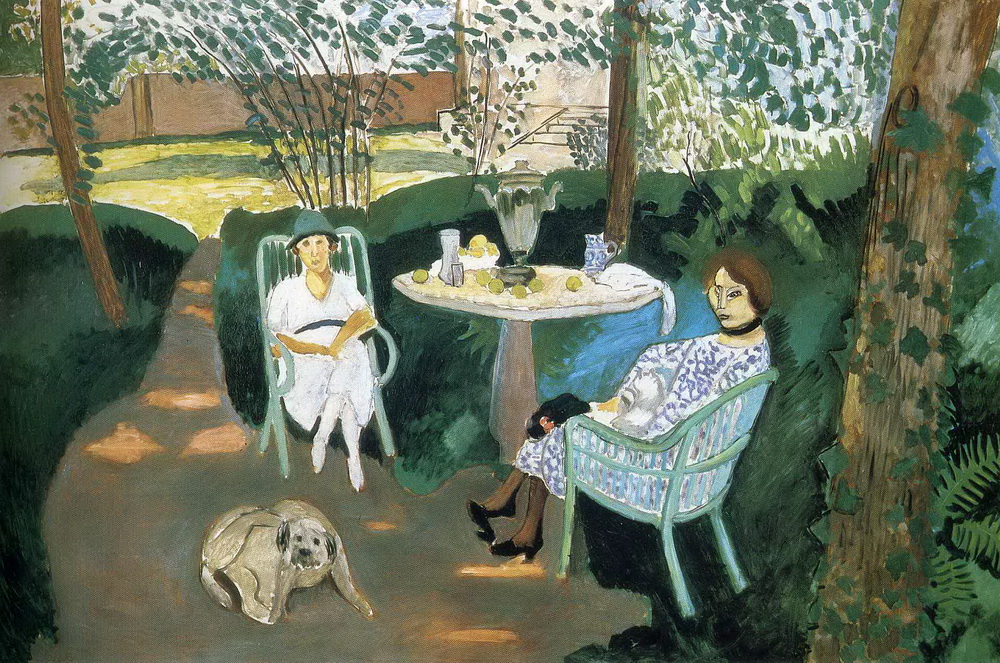
Original Size
(49)Woman in a Purple Coat, 1937, Museum of Fine Arts, Houston, TX, USA. Expressionism.
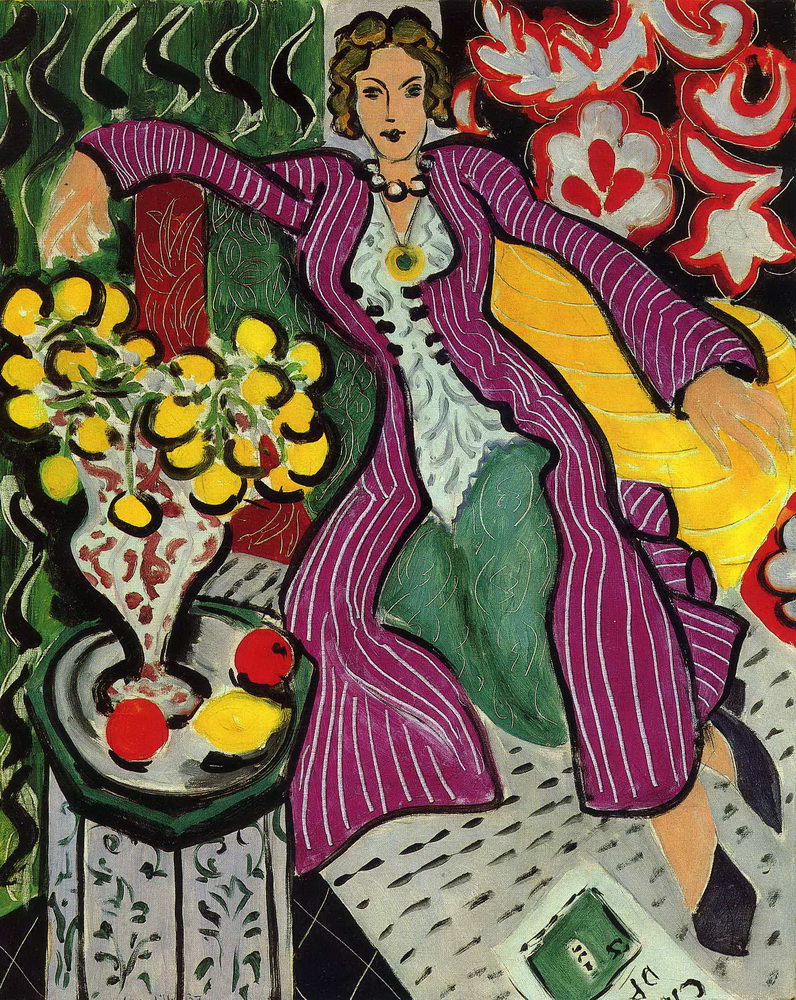
Original Size
(50)Polynesia, the sky, 1946, Troyes, musée d&rt moderne, Expressionism.

(51)Polynesia, La Mer, 1946, Musée National d&rt Moderne, Centre Georges Pompidou, Paris, France. Expressionism.

(52)La gerbe, 1953. Expressionism.

(53)The King&s Sadness, 1952. Expressionism.

(54)The Creole Dancer, 1950. Expressionism.



